In last week's S.S. Mailbag, a Buccaneers asked me, via Instagram, which of the team's recently-signed undrafted free agents (UDFAs) had the best shot to make the 2020 roster. That's a tough question to answer in May, particularly in the absence of OTAs or mini-camps, but it is definitely a fertile topic. In just about every season, the question isn't whether somebody or several somebodies from that group will make it onto the roster, it's which ones.
Last year's class of UDFAs had less impact than usual, but the coaches are high on the future of safety D'Cota Dixon and both guard Zack Bailey and outside linebacker Kahzin Daniels still have a chance to make their marks. Tight end Tanner Hudson, defensive end Demone Harris and running back Shaun Wilson all got some action out of the 2018 class of UDFAs. Tight end Antony Auclair in 2017, running back Peyton Barber in 2015, and so on.
And that's only including UDFAs who began their NFL careers in Tampa. Among the players on the Buccaneers' current roster who came into the league as undrafted rookies with other franchises are quarterback Ryan Griffin, running back Dare Ogunbowale, safety Andrew Adams and linebacker Noah Dawkins.
So I might have a tough time predicting the future as to which of this year's class of UDFAs has the best shot at being on the 53-man roster come September, but I can see the past pretty clearly. Here's one man's shot at an all-undrafted team of Buccaneers, using current and former players. That's 11 starters each on offense and defense. On offense I went with two running backs rather than a tailback and a fullback, and on defense I went with a 3-4 base simply because the pickings were much more slim along the line than at linebacker. And, again, this includes all players who originally entered the NFL as undrafted players, not just those who started with the Bucs. Without further ado:
• QB: Jeff Garcia…Started in the CFL, led Bucs to playoffs in 2007
• RB: Earnest Graham…10th-leading rusher in franchise history
• RB: LeGarrette Blount…1,939 rushing yards, 13 touchdowns in three seasons
• T: Donald Penn…108 straight left tackle starts, 2007-13
• T: Demar Dotson…106 starts at right tackle, 2009-19
• G: George Yarno…65 starts at multiple positions, 1979-87
• G: Jorge Diaz…Started 45 games at guard and three more in the postseason
• C: Evan Smith…Starting center in 2014 and later started at both guard spots
• WR: Karl Williams…115 games played is most by a receiver in team history
• WR: Adam Humphries…219 catches in 4 years, including 76 in 2018
• TE: Cameron Brate…195 catches for 2,156 yards and 27 TDs, and counting
• DE: Ray Seals…Signed from a semi-pro league; 13.5 sacks in 1992-93 seasons
• DT: Chartric Darby…Started for Bucs in Super Bowl XXXVII
• DE: Michael Bennett…15.0 sacks in 50 games as a Buc, including 9.0 in 2012
• OLB: Shaquil Barrett…NFL sack leader with 19.5 in 2019, a new Bucs record
• ILB: Cecil Johnson…111 games, 90 starts, all as a Buc, including 82 from 1977-82
• ILB: Shelton Quarles…Started at both SAM and MIKE; made Pro Bowl in 2002
• OLB: Lonnie Marts…Signed away from Chiefs; had 7.0 sacks in 1996
• CB: Brent Grimes…Seven INTs in 2016-17; led NFL with 24 PBUs in 2016
• CB: Wayne Haddix…Made Pro Bowl in 1990 after 7 INTs, 3 pick-sixes
• S: Bradley McDougald…50 games, 36 starts, 5 INTs, 228 tackles for Bucs
• S: Andrew Adams…15 starts, 5 interceptions last two seasons
As you can see, the secondary is probably the weakest part of this team; Leonard Johnson, Anthony Parker and Tony Bouie were also considerations. Jeff Garcia was the only real option at quarterback. The offensive tackles are surprisingly strong and if we needed a swing tackle we could take Anthony Davis. Peyton Barber could have joined the backfield, too. Our receivers are a little undersized but they're productive and they have great value in the return game, as well. Ryan Nece and Jeff Gooch were also considerations at linebacker.
Now on to your questions for this week.
A reminder that you can send questions to me anytime you want on Twitter (@ScottSBucs) and they're easier to find if you include the hashtag #SSMailbagBucs. We are also now soliciting questions each week on our Instagram page; look for that story on Wednesdays. As always, if you want to get a longer question into the mailbag and would prefer to email your question, you can do so to tbbsocial@buccaneers.nfl.com.
Good afternoon Scott,
We all know you are the Buclopedia. In your opinion who is the current on past Buccaneer that the team expected the most from, but injury set the team back for years. I'm thinking Carl Nicks, with Caddy being a close 2nd.
Rodney (via email to tbbsocial@buccaneers.nfl.com)
That's an interesting question, Rodney, and before I even begin to look into it I think there's a good chance you have the best answer with Carl Nicks. That was such a disappointing situation for both him and the team.
For anyone who doesn't recall, the Buccaneers signed Nicks away from the New Orleans Saints in 2012, the same year they grabbed Vincent Jackson from the Chargers. That had a chance to be a double-dip of free agency goodness along the lines of Brad Johnson and Simeon Rice in 2001. Jackson certainly lived up to his contract, and played the whole five years on it, which isn't really that common for unrestricted free agents and deals of that length. Unfortunately for the Buccaneers and Nicks, a toe injury limited him to just seven games in 2012 and further complications meant he would play only two more contests in 2013, his last season in the NFL, at the age of 28.
Nicks was a mountainous guard who moved like a much smaller man, and his defection from New Orleans was only possible because the Saints had to use their franchise tag on Drew Brees. Nicks was going to step in at left guard and pair with Davin Joseph to give the Buccaneers one of the better guard combinations in the NFL, with Jeremy Zuttah moving to center to replace the departing Jeff Faine. Of course, that never came to fruition because Joseph suffered a season-ending knee injury in the third 2012 preseason game and the Bucs ended up using various interior-line combinations of Zuttah, Ted Larsen and Jamon Meredith. It's hard to say how much Nicks' injury really hurt the Bucs, though, at least in 2012. Tampa Bay's offense still finished third in yards and fourth in points and rookie running back Doug Martin had a huge year. I think it's fair to believe that Nicks would have been an important presence on the line for at least four or five years, however, had the injury not seriously shortened his career.
You also brought up Cadillac Williams, who was the fifth-overall pick in the 2005 draft. Williams had to overcome two major knee injuries during his Bucs tenure plus some more minor issues that cost him a couple games as a rookie. But he still ran for 1,178 yards in 2005 and helped the Bucs to an 11-5 record and a division title in 2005. And when he missed most of the 2007 season, Tampa Bay still made it to the playoffs. Earnest Graham did a great job of picking up the slack while Williams was out for the last eight games of '07 and the first 10 of '08, and the Bucs had a 7-3 record without Williams in that 2008 campaign. Injuries almost surely kept the very talented Williams from having a more productive career, but I'm not sure we can say they derailed the Bucs as a team.
Now give me a second to see if I can better examples.
Okay, well I didn't find much in the rest of the Bucs' free agency history. I assume we're talking an injury suffered relatively early after that player arrived in Tampa, and not something like the knee injury that Joe Jurevicius suffered in his second season as a Buccaneer after the Super Bowl campaign. Running back Charlie Garner only lasted three games as a Buccaneer but he was probably near the end of his career anyway. That same year, 2004, the Bucs signed big guard Matt O'Dwyer and I think they expected him to start but he only played in four games. Neither of those really rises to the level of Carl Nicks, though.
As for draft picks, both Lee Roy Selmon and Doug Williams missed big chunks of their respective rookie seasons due to injuries, but that didn't stop either from accomplishing big things for the franchise. And you know what? I really can't find an example better than Caddy. Can I count Bo Jackson? His belief that the Bucs previous ownership knowingly cost him his final year of college baseball eligibility was, uh, injurious to his sense of right and wrong? And that's why he never played for the team despite being the first player drafted in 1986. I'd say that was a setback.
Yeah, I know that doesn't really count. I'm not thrilled to be admitting defeat here, Rodney, but I think you included the best answer in your question. Pretty clever move on your part.
Greetings, Scott,
Its been an exciting offseason and I keep hearing about how the Buccaneers now have so many weapons for Tom Brady to throw the ball to and its going to be hard for defenses to stop all of them. As a Bucs fan, I'm optimistic, but how is that going to work? I mean there's only one football to go around. Is everybody going to get a shot? Is somebody going to be mad. Just tell me how you think the catches are going to be divided up this year, if you could. Thanks!
Mike Reynolds (via email to tbbsocial@buccaneers.nfl.com)
Let's start by saying that this may not be as difficult of an issue as you're making it out to be, Mike. Just two seasons ago, the Buccaneers had five different players record 500-plus receiving yards. That's not exactly a common occurrence; it's been done six times in the last five years, interestingly twice each by the Bucs, New England Patriots and Washington Redskins. In four of those six instances, the team had a 1,000-yard receiver among their five 500-yard receivers. However, getting four players to 500 or more receiving yards is relatively common these days; it's been done 39 times in the last five years.
I know you asked specifically about receptions and not yards, and I will honor the question as submitted below, but I started with yards because I think it's the more important statistic for pass-catchers. Chris Godwin had 19 more catches than Mike Evans last year but they both finished in the top four in the NFL in receiving yards per game and I think it's fair to say they were equally important to the Bucs' offense.
So the Bucs as currently constituted have at least five players easily capable of getting to 500 receiving yards in 2020 and they have a quarterback who has shown he can lift all boats with a rising tide. It's a promising combination. I'd say it's a near certainty, barring injury, that Evans and Godwin and either Rob Gronkowski or O.J. Howard will get to 500 yards in 2020. After that, it would be no surprise to see the other tight end from that duo and either a running back (Ronald Jones or Ke'Shawn Vaughn) or a third receiver (Tyler Johnson, Scotty Miller or Justin Watson) challenge that mark as well. Let's look at how it could break down, since that is the question you asked.
I'll start with evidence from last year. The Bucs' top five pass catchers by yards last year were Godwin, Evans, Breshad Perriman, Brate and Howard. Those five were available together in 11 of 16 games, and these were there reception-yards-touchdowns totals in just those 11 games:
Godwin: 70-1,108-9
Evans: 44-779-5
Perriman: 15-254-1
Brate: 27-227-3
Howard: 28-367-1
Collectively, those five accounted for 69.2% of the team's receptions in those games, 78.2% of its receiving yards and 86.4% of its touchdown catches. Here's what each individual player was responsible, in terms of their percentage of the passing attack's completions, yards and touchdowns in those 11 games:
Godwin: 26.3/31.7/40.9
Evans: 16.5/22.3/22.7
Perriman: 5.6/7.3/4.5
Brate: 10.2/6.5/13.6
Howard: 10.5/10.5/4.5
Perriman famously ended the season on a rush, recording the first three 100-yard games of his career and ranking among the NFL's leading pass-catchers after hamstring injuries took out Evans, Godwin and Miller in December. As you can see, however, the team's third wideout wasn't responsible for a huge part of the offense when both Godwin and Evans were running around the field. I'm going to make a variety of assumptions while coming up with this estimate, and here's one: Tom Brady will get a third receiver, whoever that may be, a bit more involved in 2020.
Here's another assumption: The Buccaneers will not quite repeat as the NFL's leading passing attack (in terms of yards) in 2020. Last year the Bucs set franchise records with 302.8 passing yards per game and were the only team over 300 per game on the year. Yes, overall passing numbers continue to rise around the NFL but it's an awfully optimistic prediction to say your team will be first in the league and set team records in any year. Furthermore, I think Bruce Arians would prefer to have a more balanced offense, so I'm guessing the Bucs rushing numbers go up a bit and the passing numbers go down a bit.
So let's be cautiously optimistic and say the Bucs have a top-five passing attack. Last year, Kansas City was fifth in the league with 281.1 passing yards per game. Patrick Mahomes and company (remember, he missed a little time due to injury) completed 378 passes on the year, so I'll go with that number. Using the percentages above for the Bucs' top receivers in 2019, and substituting Gronkowski in, for argument purposes, for Brate and a guessing that Johnson will win the third receiver job, here are possible reception totals for those five:
Godwin: 99
Evans: 62
Gronkowski: 39
Howard: 40
Johnson: 21
That seems reasonable but I'm going to make a few tweaks. I don't think there will be quite that much of a separation between Godwin and Evans; that's nearly twice the separation between the two last year. I also would expect Gronkowski to get a larger share than Brate did, if for no other reason that he's such a trusted partner for Brady. And I think Johnson will get a little more attention than Perriman did for the first half of the 2019 season. So let's say this:
Godwin: 88
Evans: 78
Gronkowski: 50
Howard: 30
Johnson: 30
By the way, that still leaves 102 catches for other players to hit that mark of 378. That's always spread out among a lot of players – including, last year, Vita Vea – but I would suspect the man who will get the largest share of that is Vaughn. Pencil him in for 30-40 receptions; Dare Ogunbowale had 35 last year to lead Buccaneer backs.
So there's my sure-to-be-wrong prediction, Mike. What do you think? I may not have the numbers exactly right but I'll stand by the idea that everyone can have a reasonable share in this offense. As Arians has said before there are always going to be guys who are a little mad after one game or another, but in the long run everyone should be happy enough.
View pictures of all the Buccaneers' 2020 opponents.
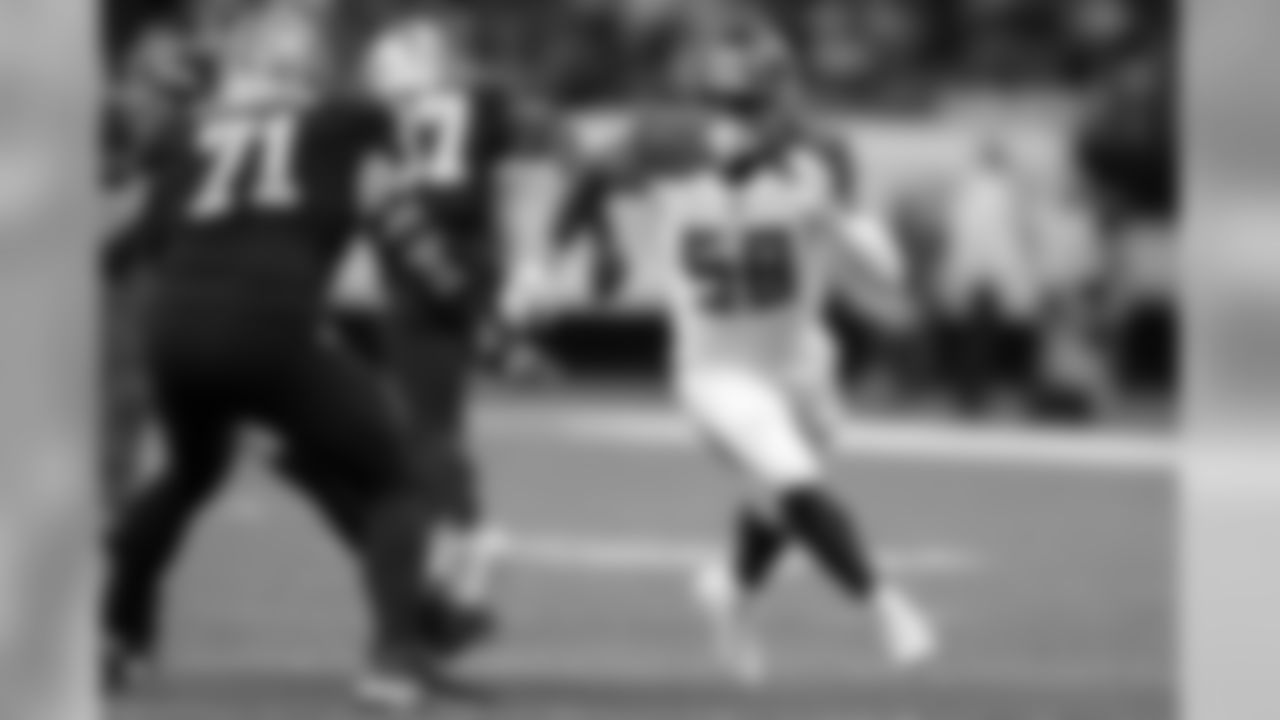
Week 1: Bucs @ Saints, 4:25pm ET FOX
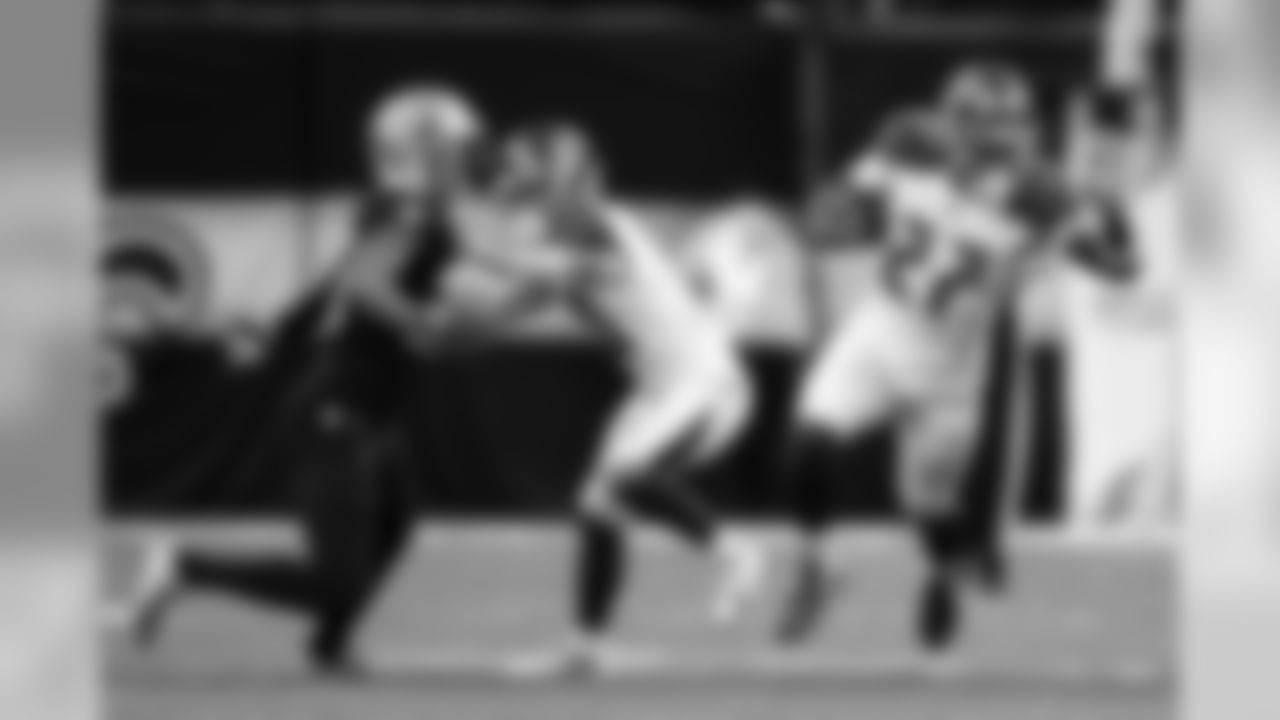
Week 1: Bucs @ Saints, 4:25pm ET FOX

Week 1: Bucs @ Saints, 4:25pm ET FOX
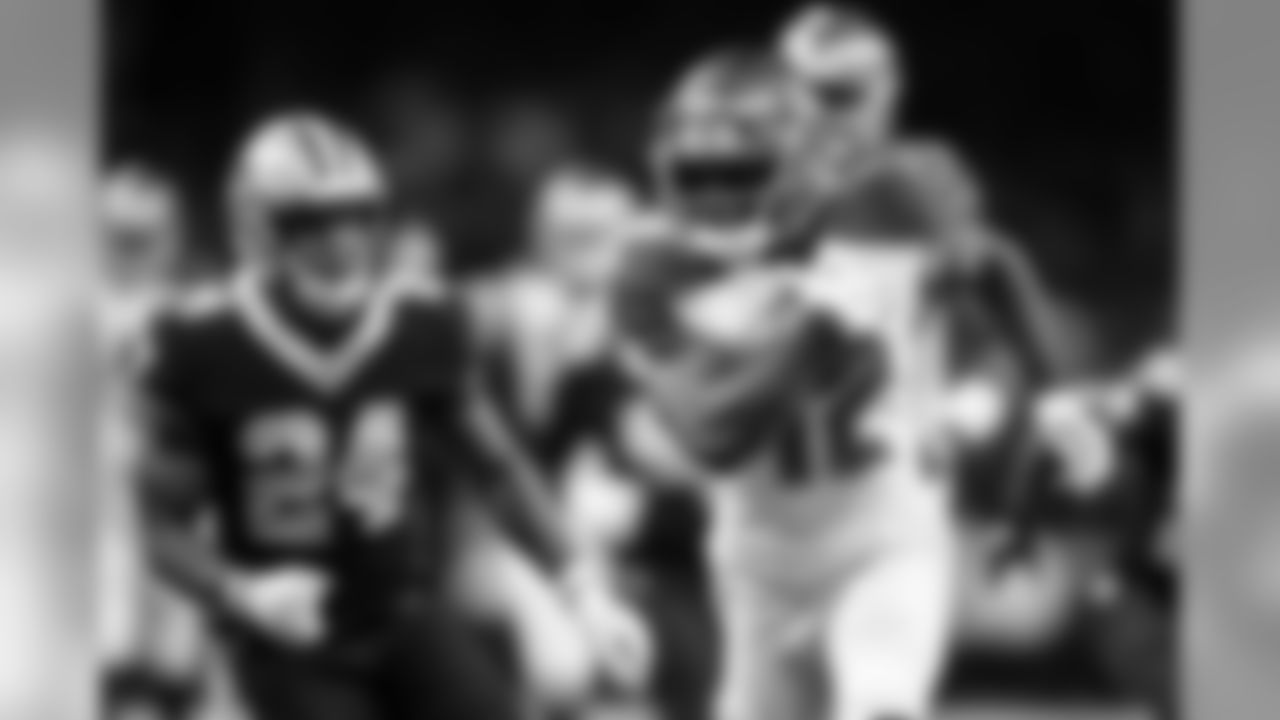
Week 1: Bucs @ Saints, 4:25pm ET FOX
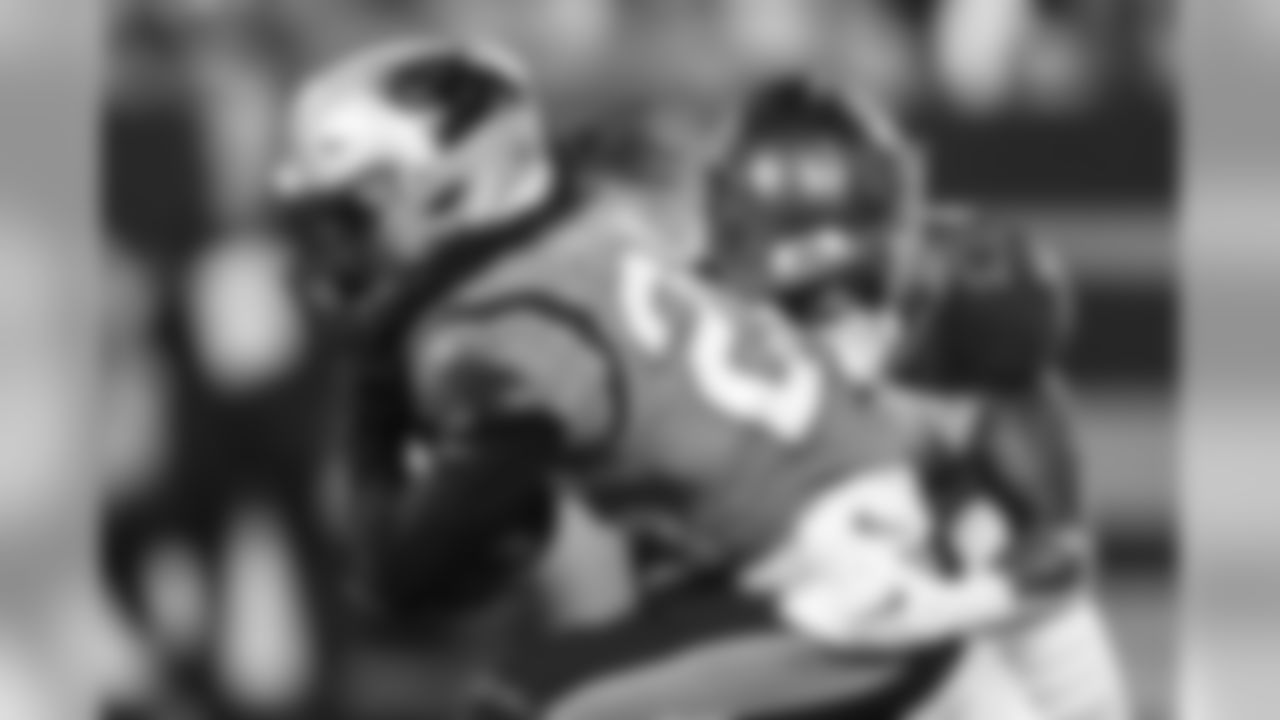
Week 2: Bucs vs. Panthers, 1pm ET FOX
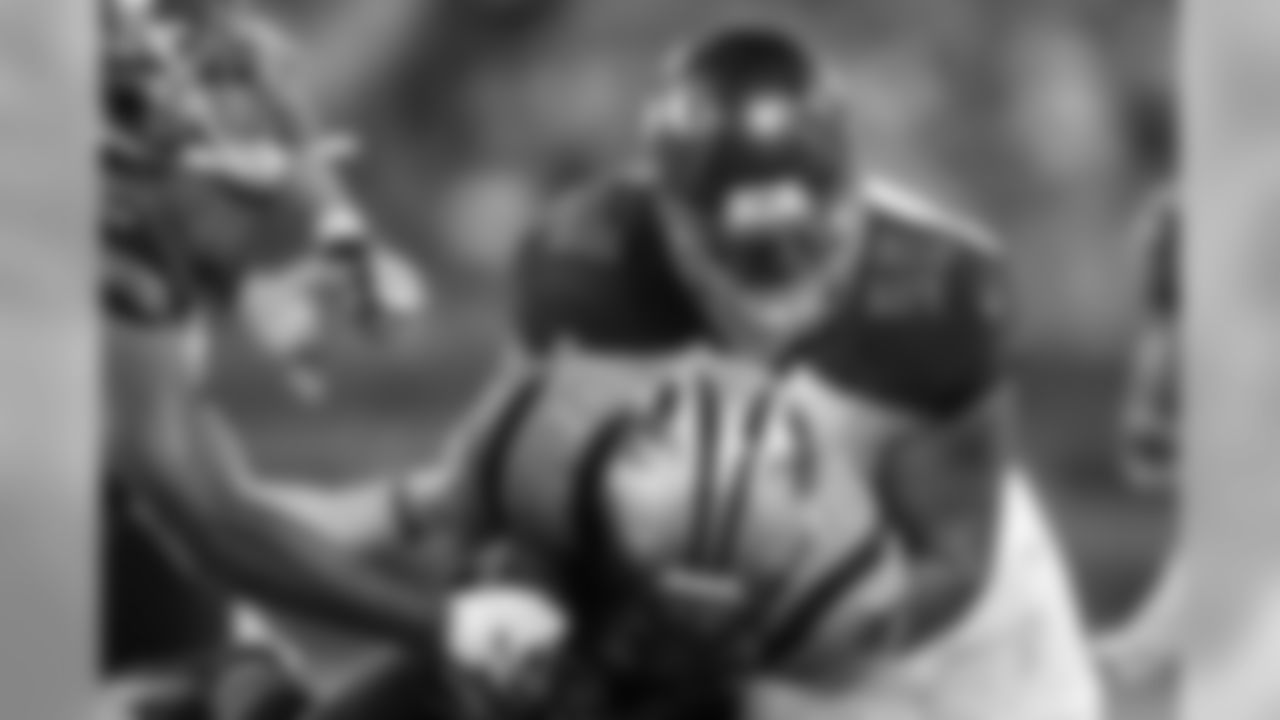
Week 2: Bucs vs. Panthers, 1pm ET FOX
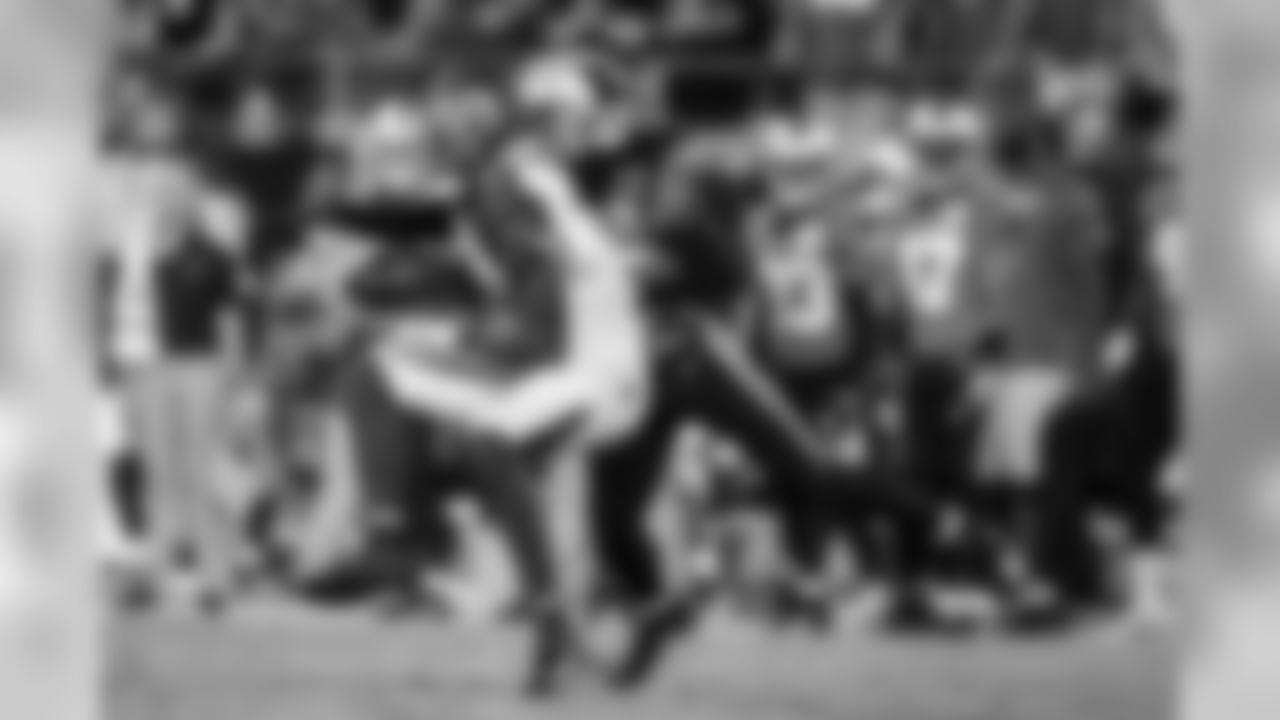
Week 2: Bucs vs. Panthers, 1pm ET FOX
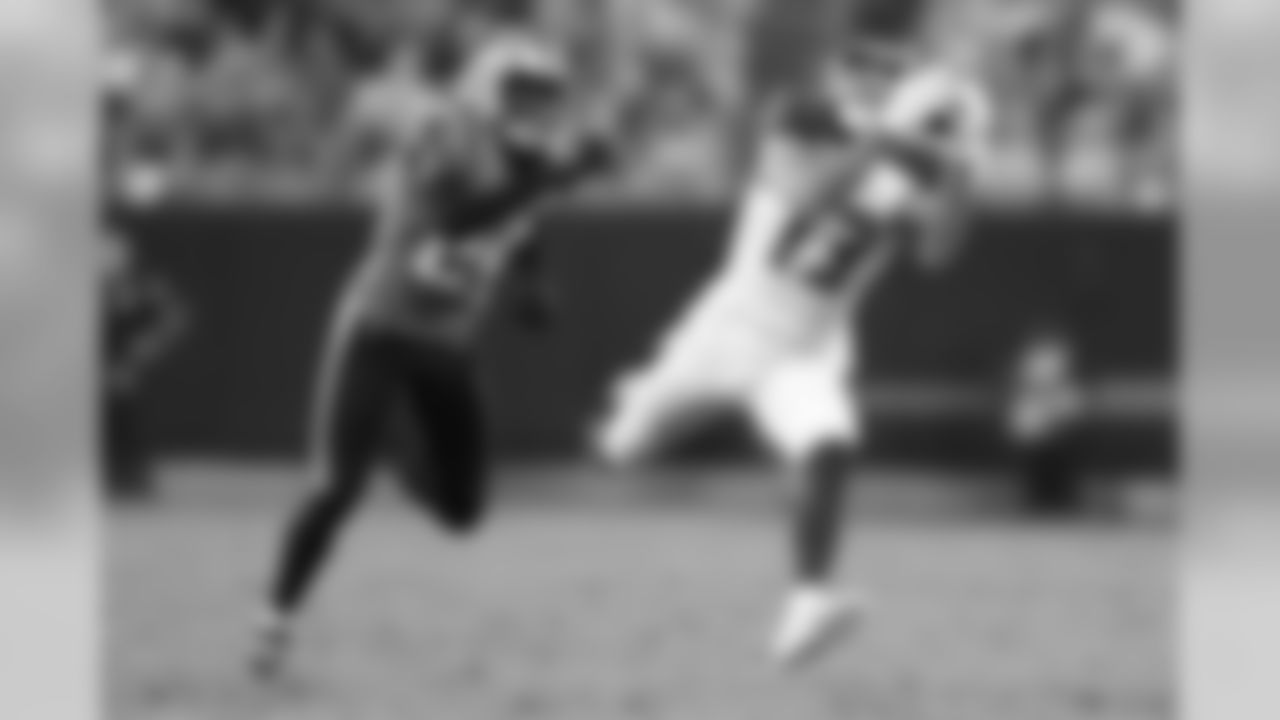
Week 2: Bucs vs. Panthers, 1pm ET FOX
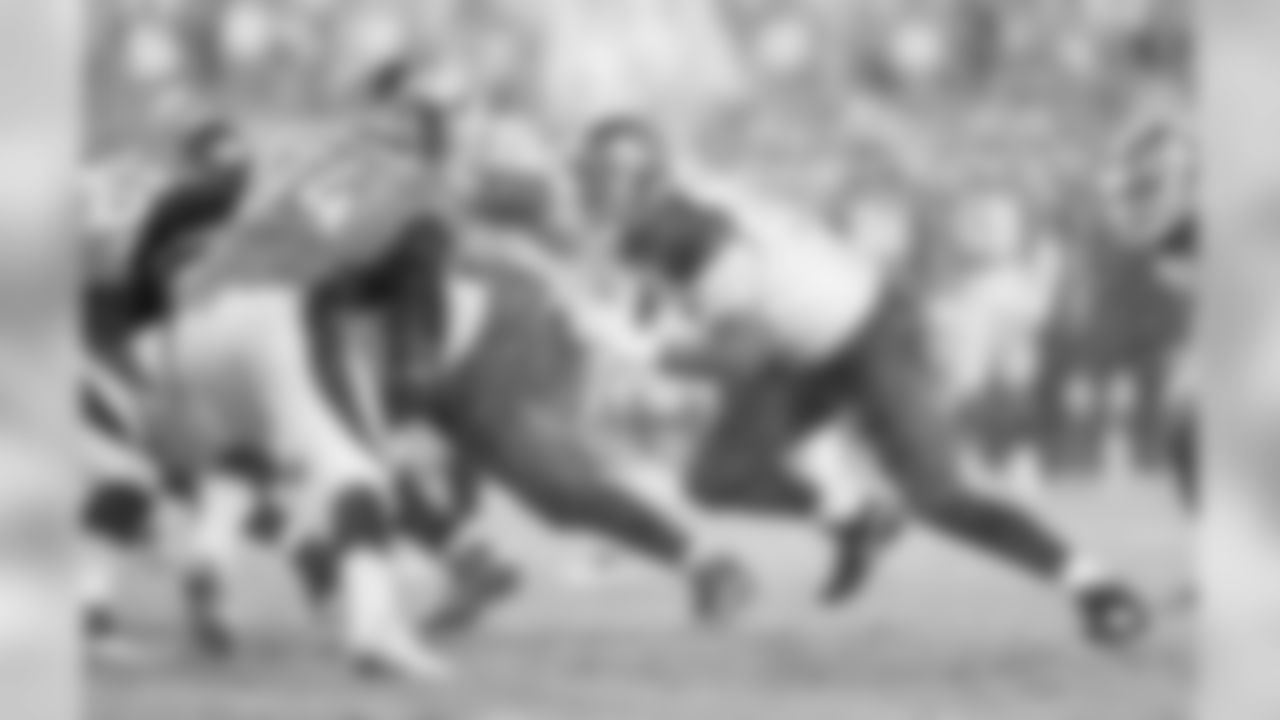
Week 3: Bucs @ Broncos, 4:25pm ET FOX

Week 3: Bucs @ Broncos, 4:25pm ET FOX

Week 3: Bucs @ Broncos, 4:25pm ET FOX
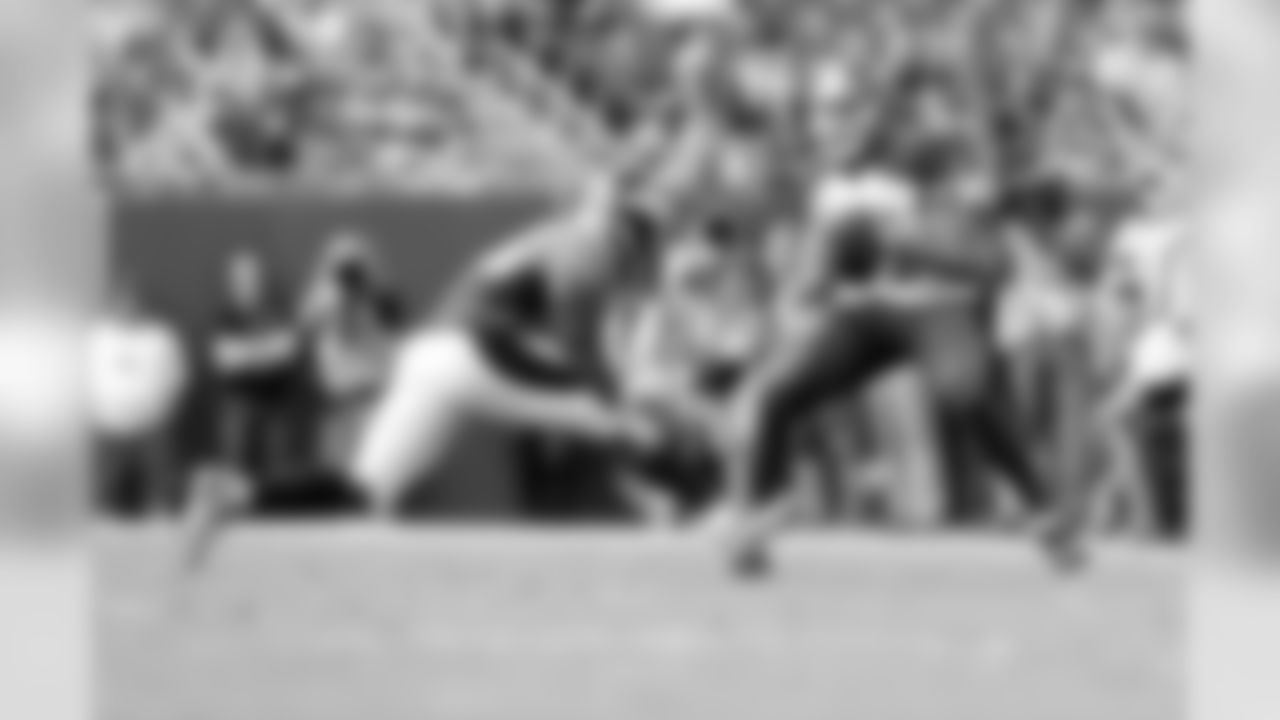
Week 3: Bucs @ Broncos, 4:25pm ET FOX

Week 4: Bucs vs. Chargers, 1pm ET CBS
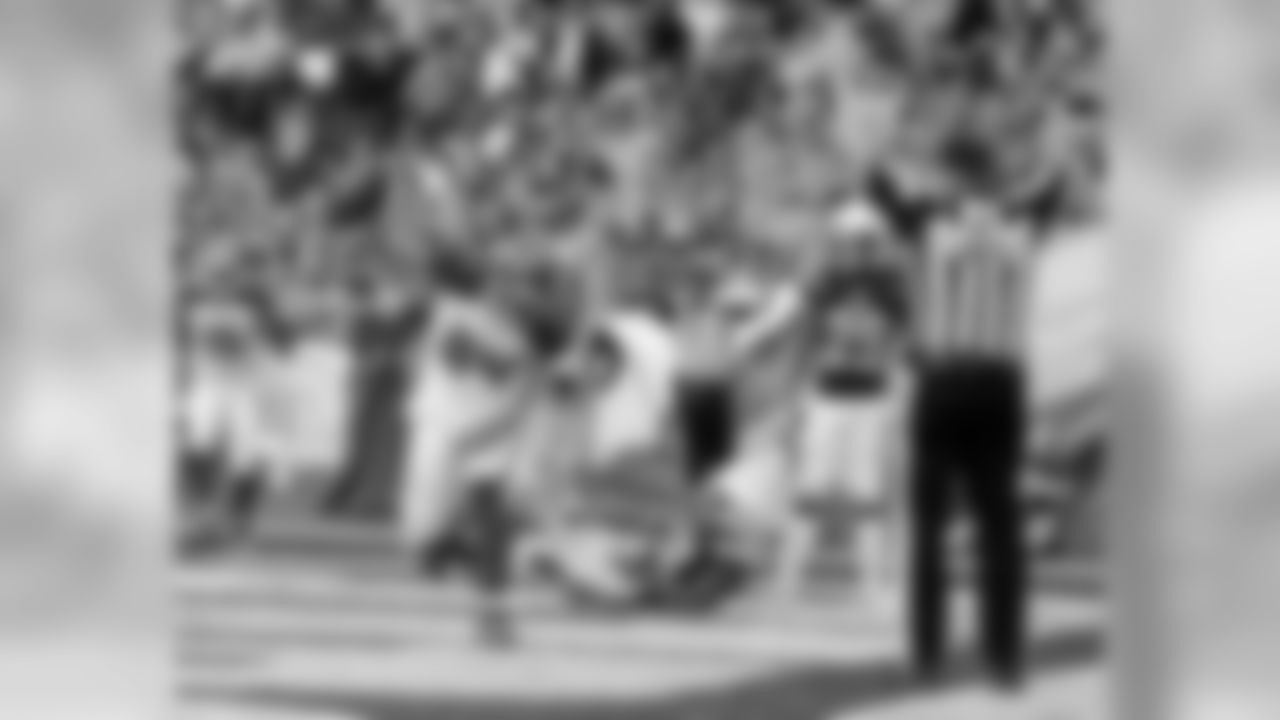
Week 4: Bucs vs. Chargers, 1pm ET CBS

Week 4: Bucs vs. Chargers, 1pm ET CBS

Week 4: Bucs vs. Chargers, 1pm ET CBS
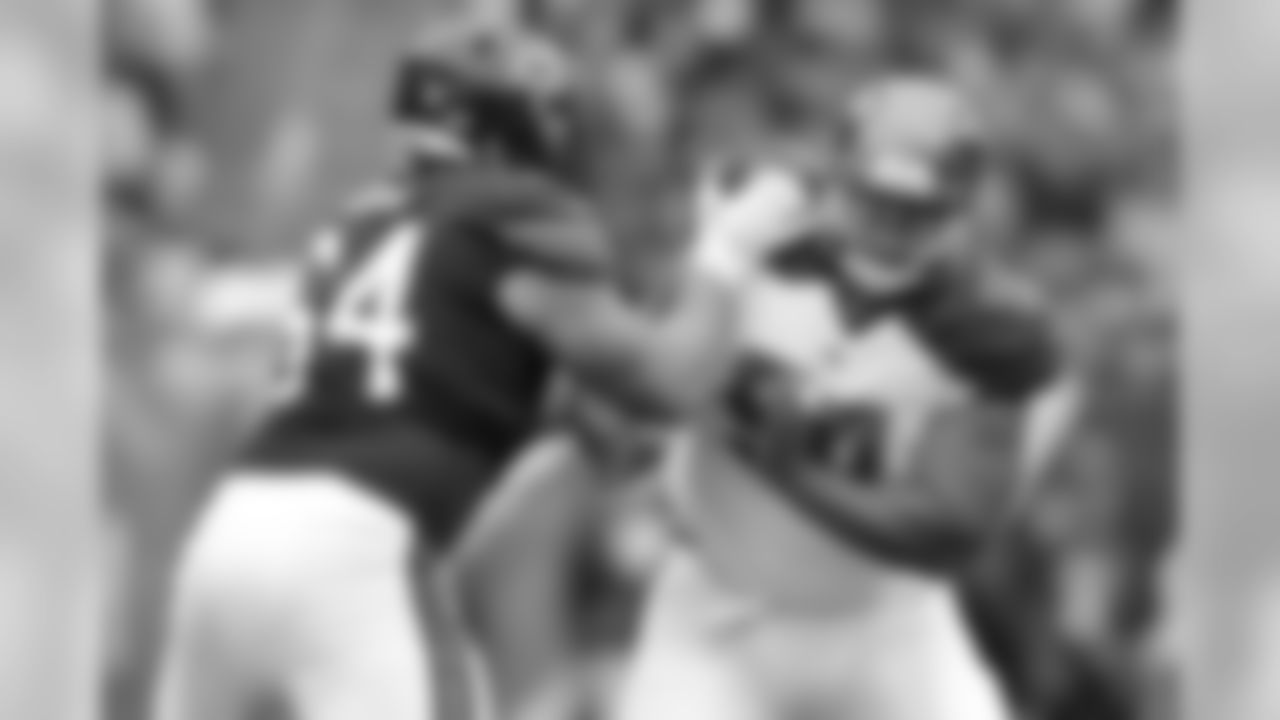
Week 5: Bucs @ Bears, 8:20pm ET FOX, NFL Network, Amazon
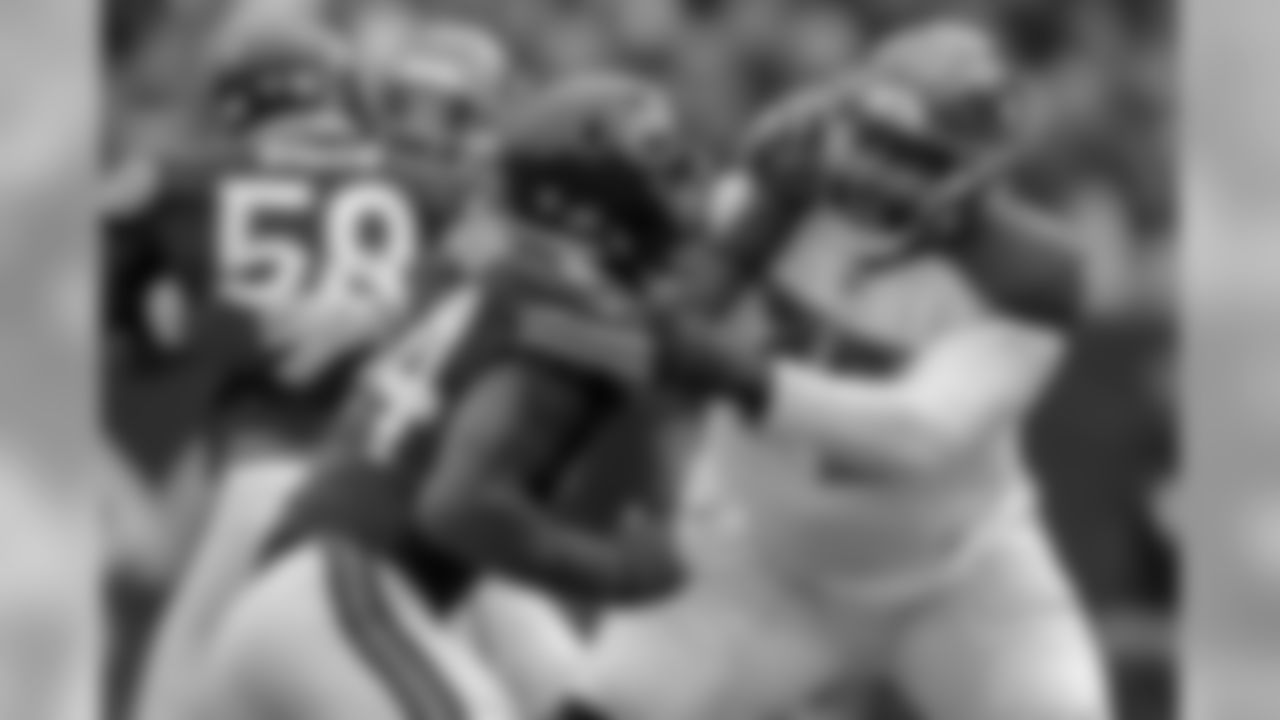
Week 5: Bucs @ Bears, 8:20pm ET FOX, NFL Network, Amazon
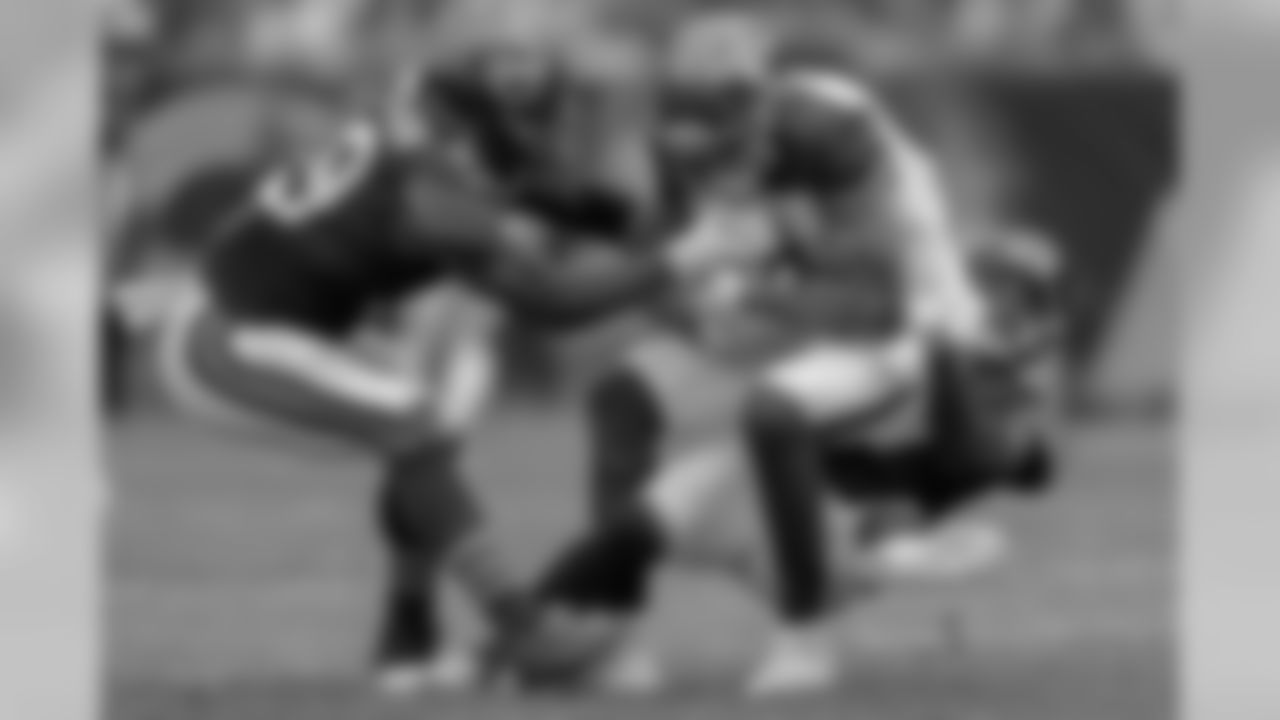
Week 5: Bucs @ Bears, 8:20pm ET FOX, NFL Network, Amazon

Week 5: Bucs @ Bears, 8:20pm ET FOX, NFL Network, Amazon

Week 6: Bucs vs. Packers, 4:25pm ET FOX
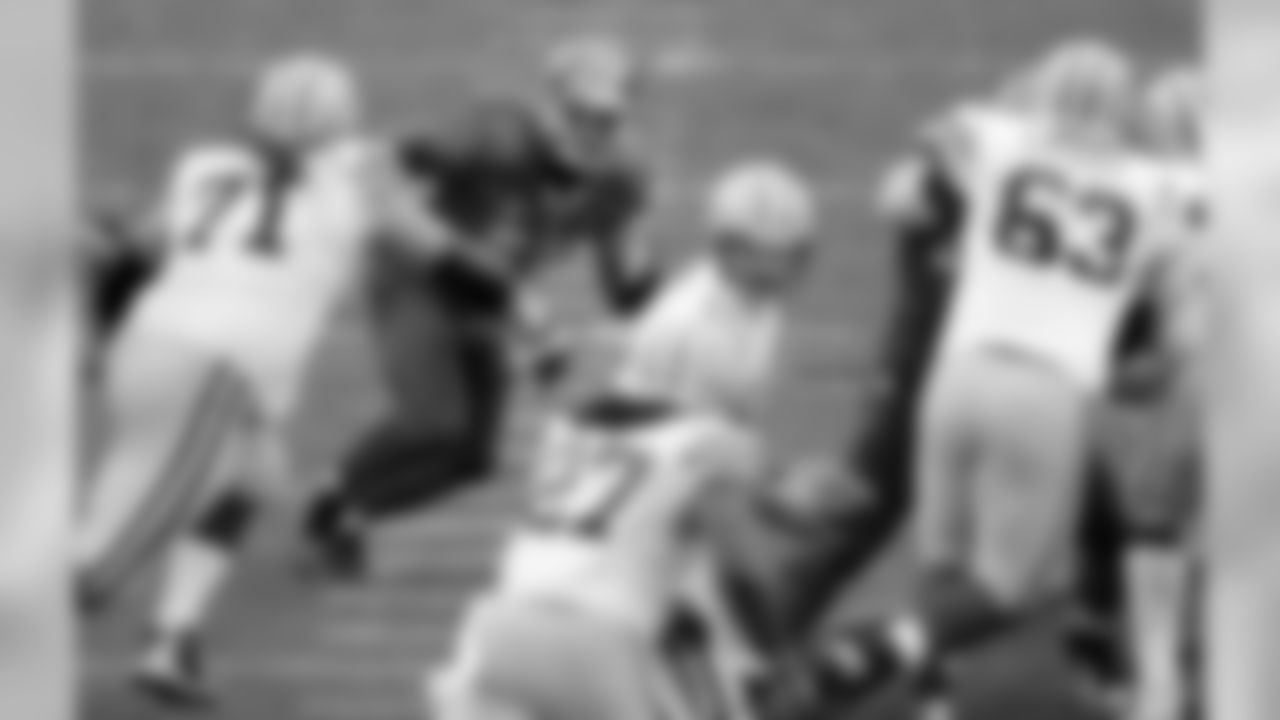
Week 6: Bucs vs. Packers, 4:25pm ET FOX

Week 6: Bucs vs. Packers, 4:25pm ET FOX
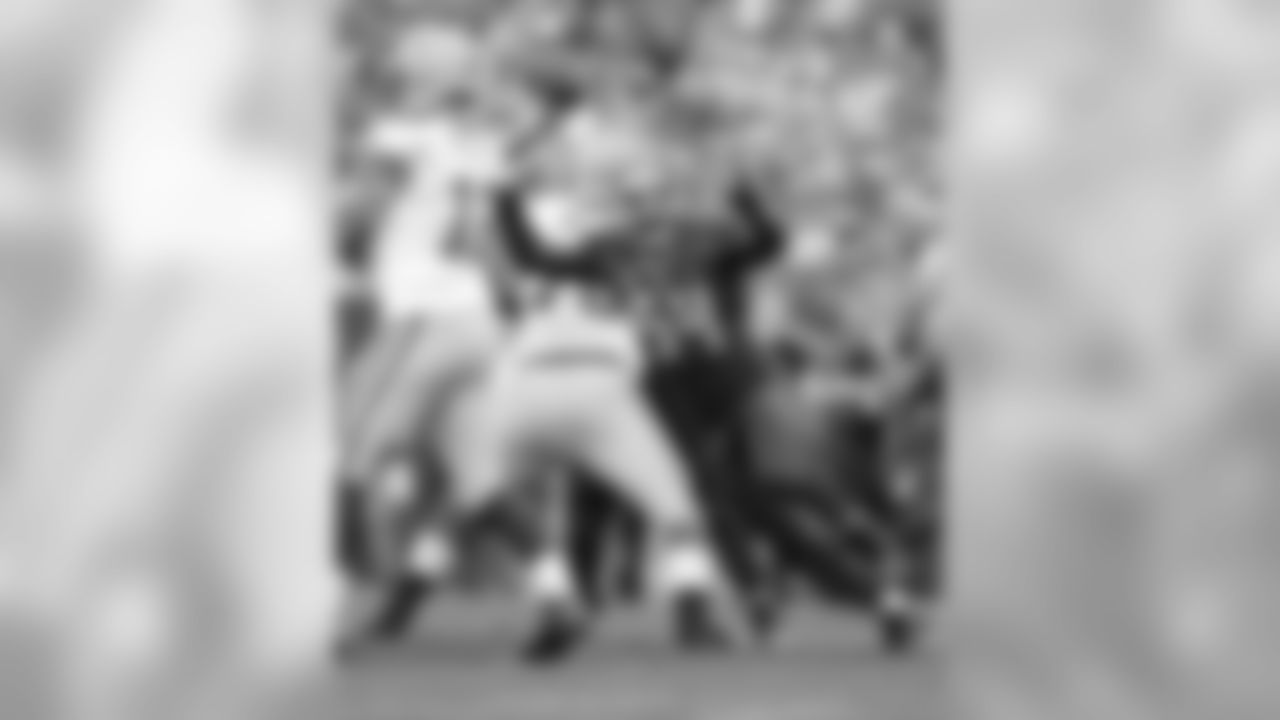
Week 6: Bucs vs. Packers, 4:25pm ET FOX
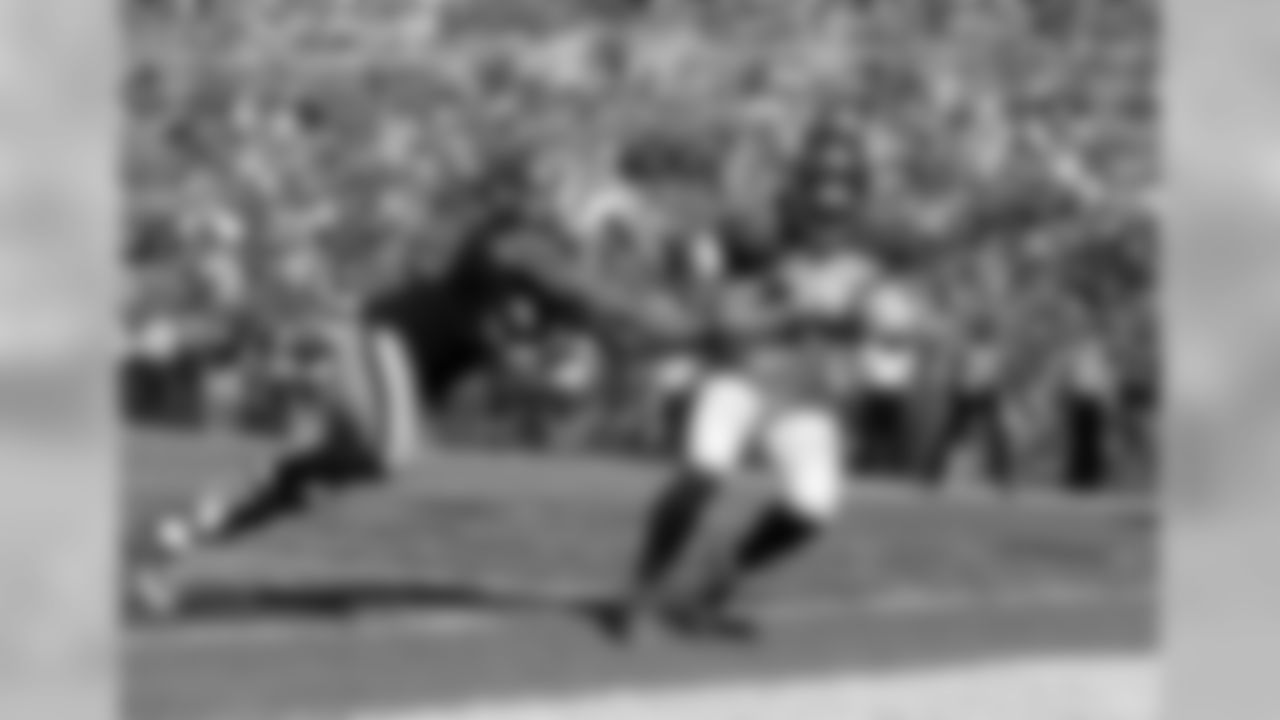
Week 7: Bucs @ Raiders, 8:20pm ET NBC

Week 7: Bucs @ Raiders, 8:20pm ET NBC

Week 7: Bucs @ Raiders, 8:20pm ET NBC
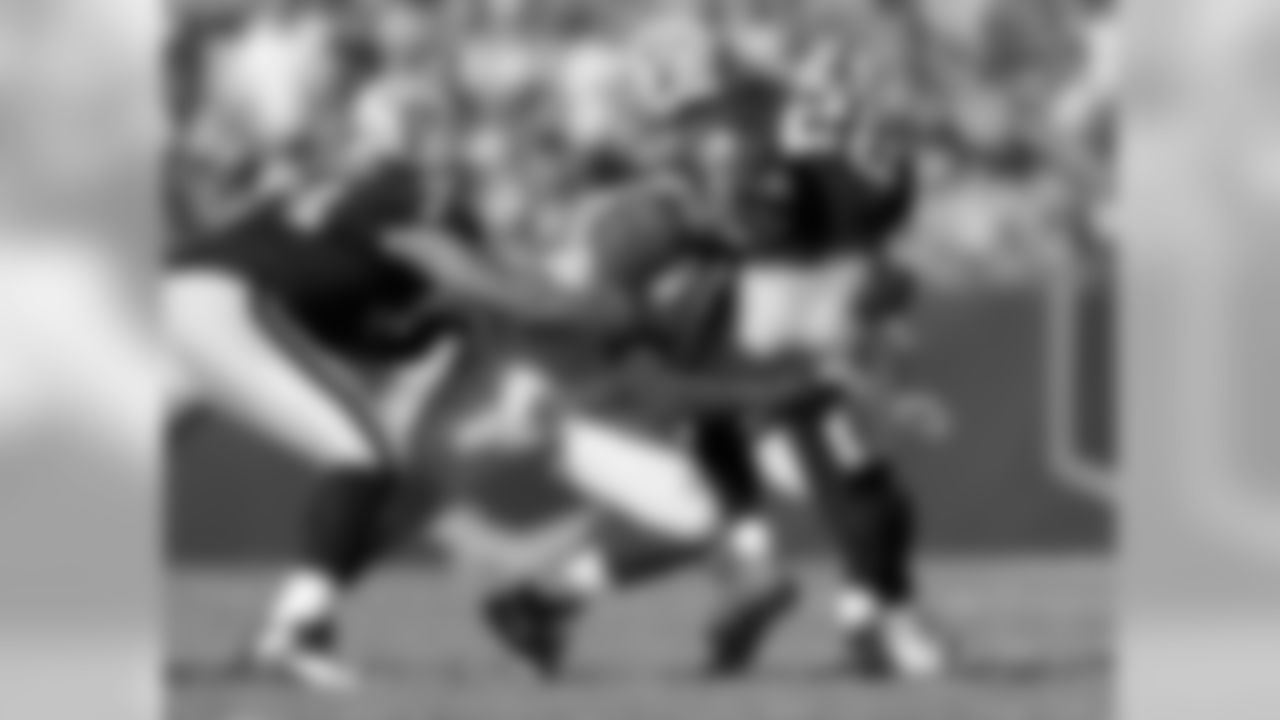
Week 7: Bucs @ Raiders, 8:20pm ET NBC
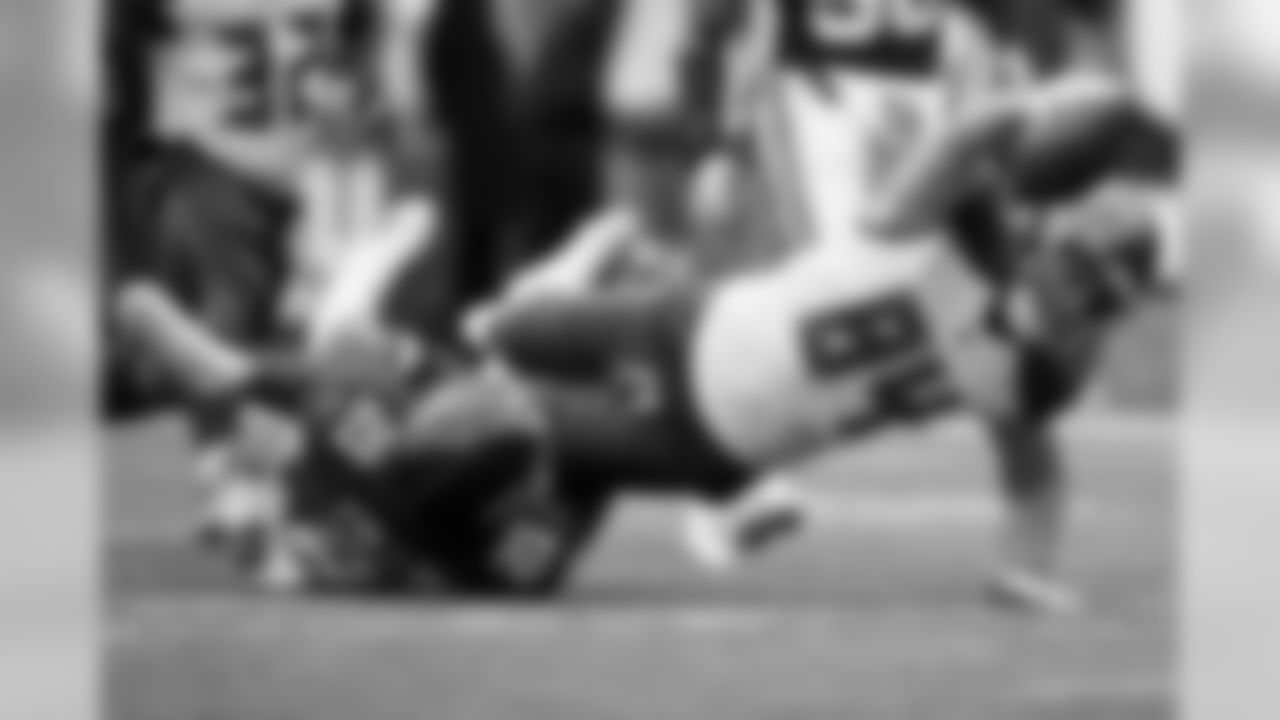
Week 8: Bucs @ Giants, 8:15pm ET ESPN
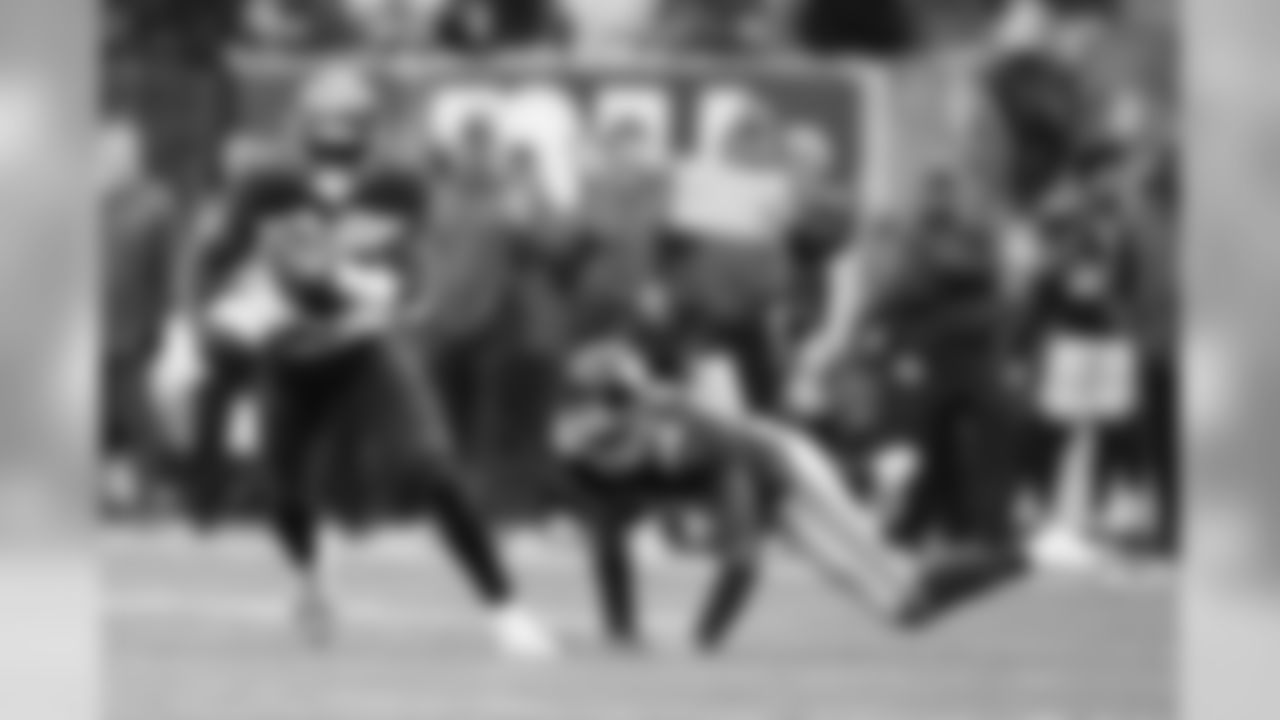
Week 8: Bucs @ Giants, 8:15pm ET ESPN
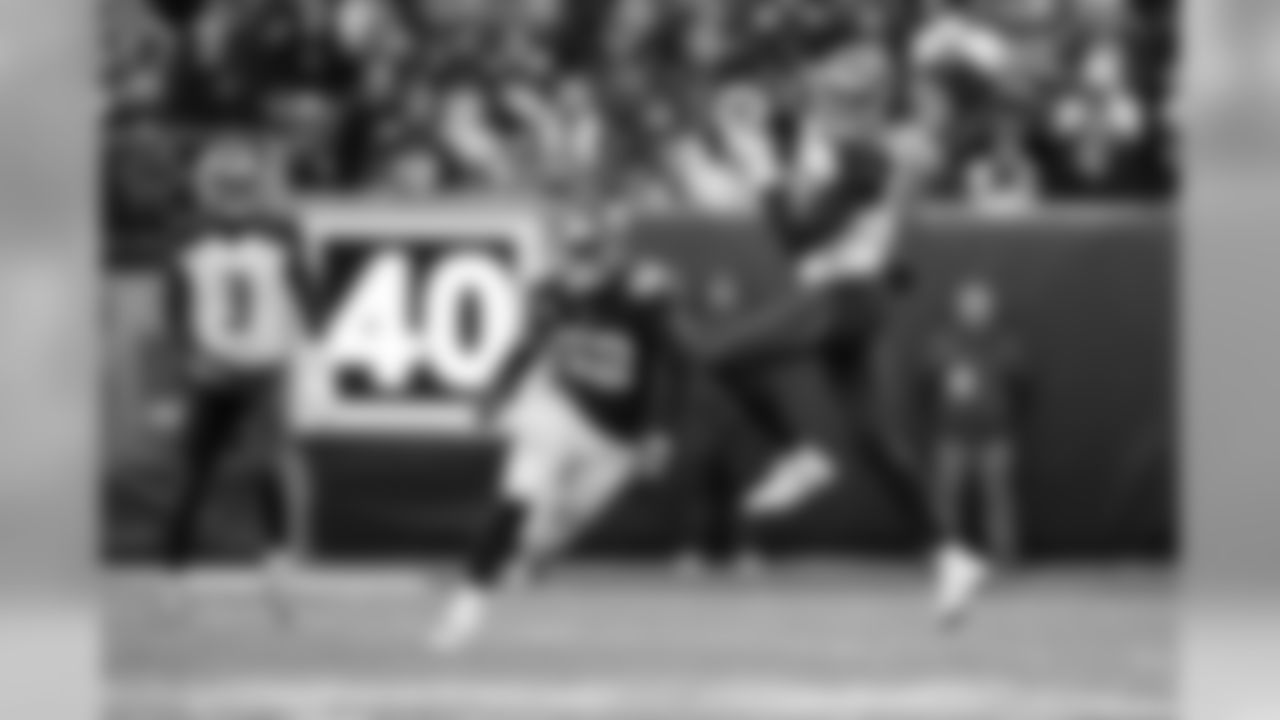
Week 8: Bucs @ Giants, 8:15pm ET ESPN

Week 8: Bucs @ Giants, 8:15pm ET ESPN

Week 9: Bucs vs Saints, 8:20pm ET NBC

Week 9: Bucs vs Saints, 8:20pm ET NBC

Week 9: Bucs vs Saints, 8:20pm ET NBC
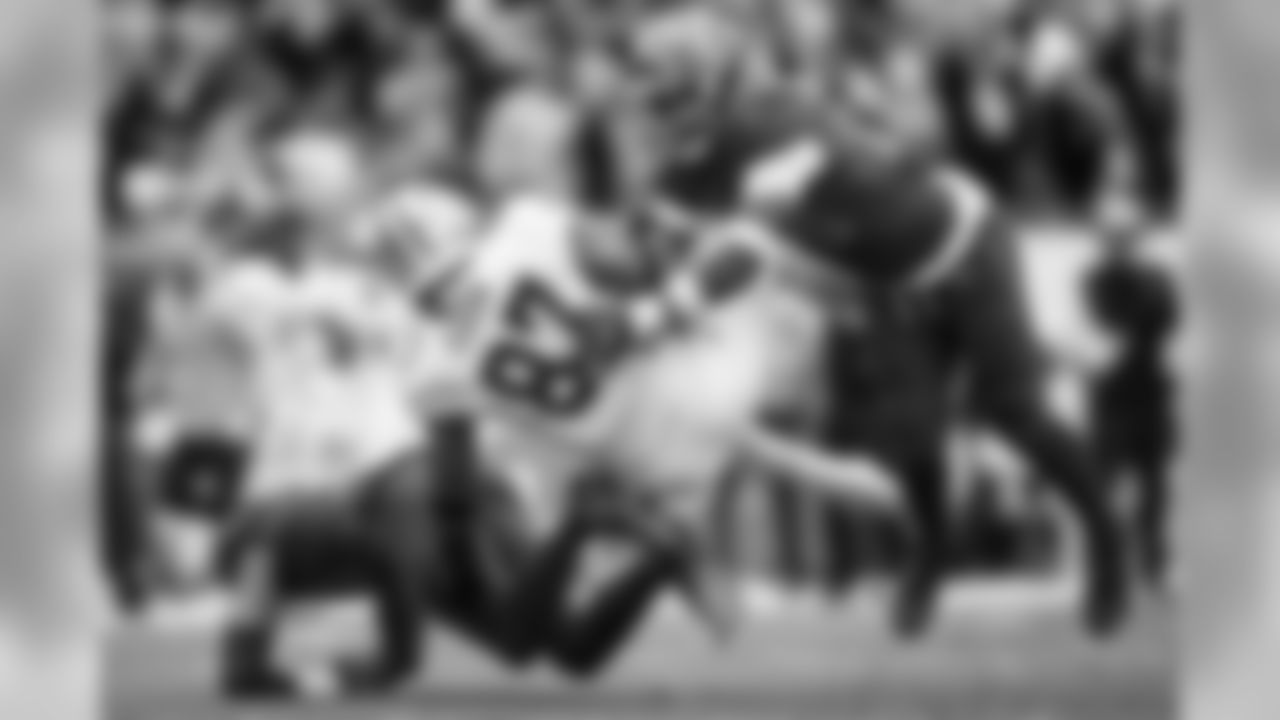
Week 9: Bucs vs Saints, 8:20pm ET NBC
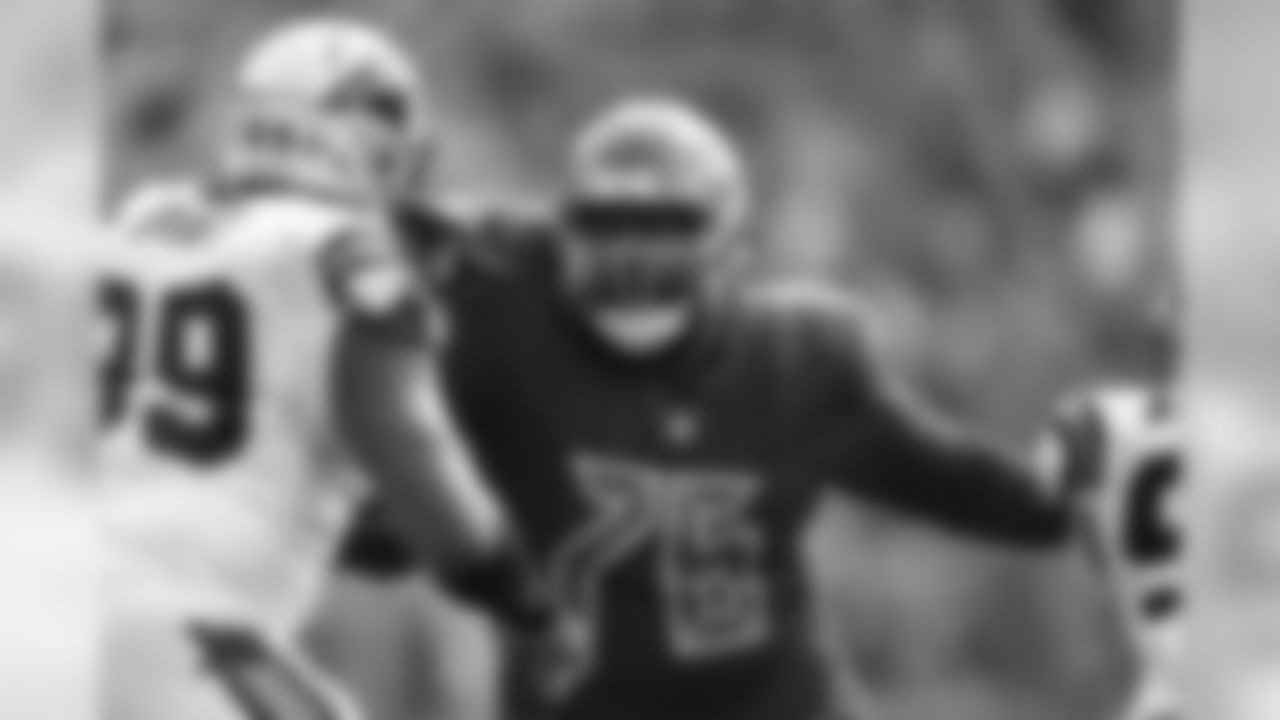
Week 10: Bucs @ Panthers, 1pm ET FOX

Week 10: Bucs @ Panthers, 1pm ET FOX
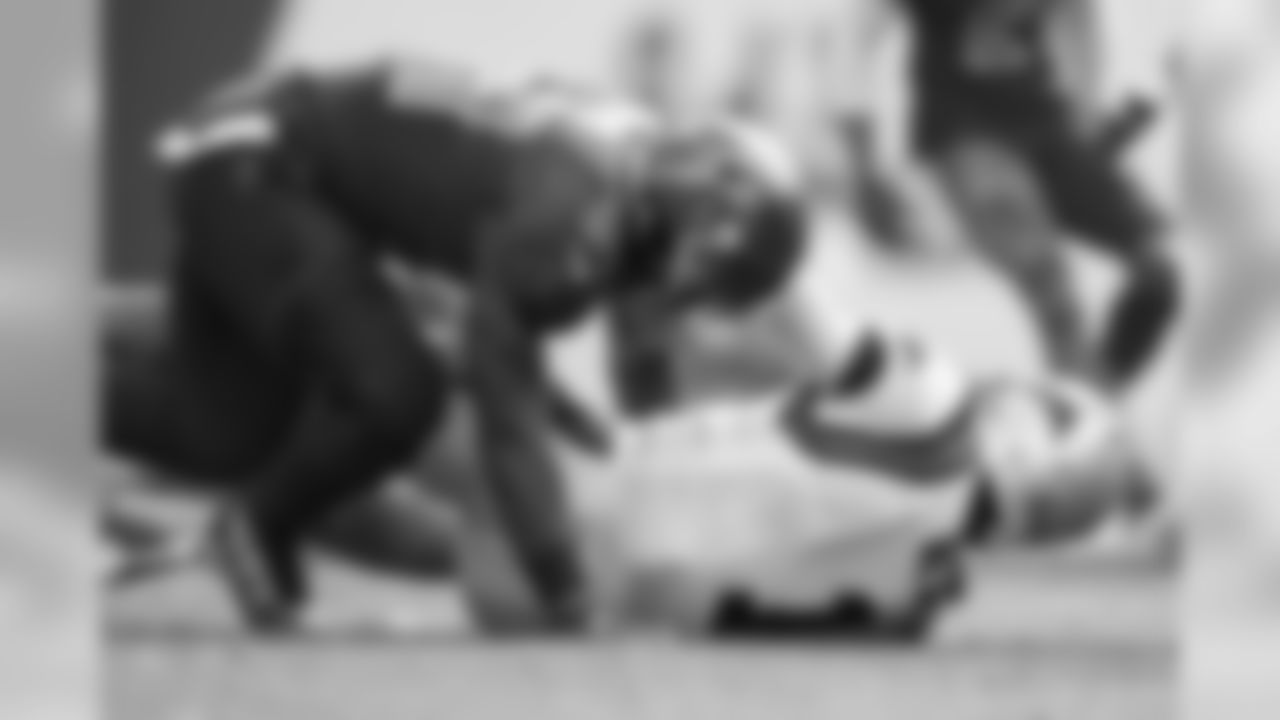
Week 10: Bucs @ Panthers, 1pm ET FOX
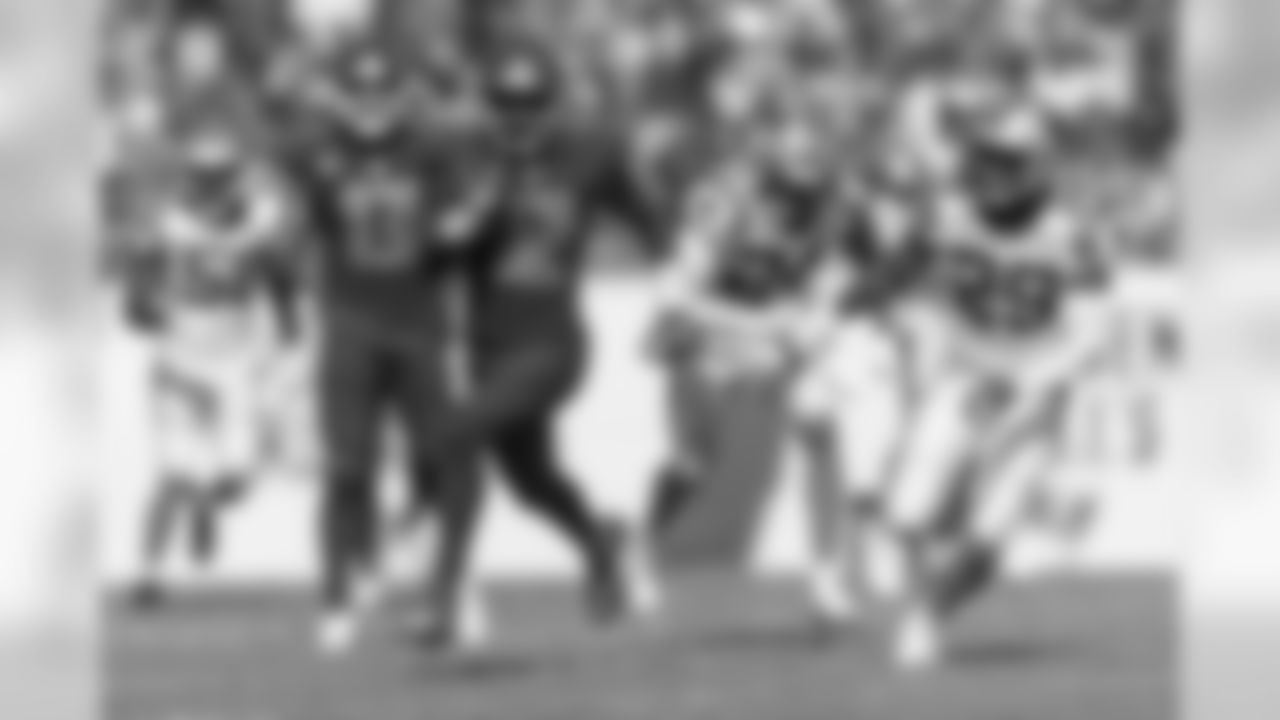
Week 10: Bucs @ Panthers, 1pm ET FOX

Week 11: Bucs vs. Rams, 8:15pm ET ESPN

Week 11: Bucs vs. Rams, 8:15pm ET ESPN

Week 11: Bucs vs. Rams, 8:15pm ET ESPN
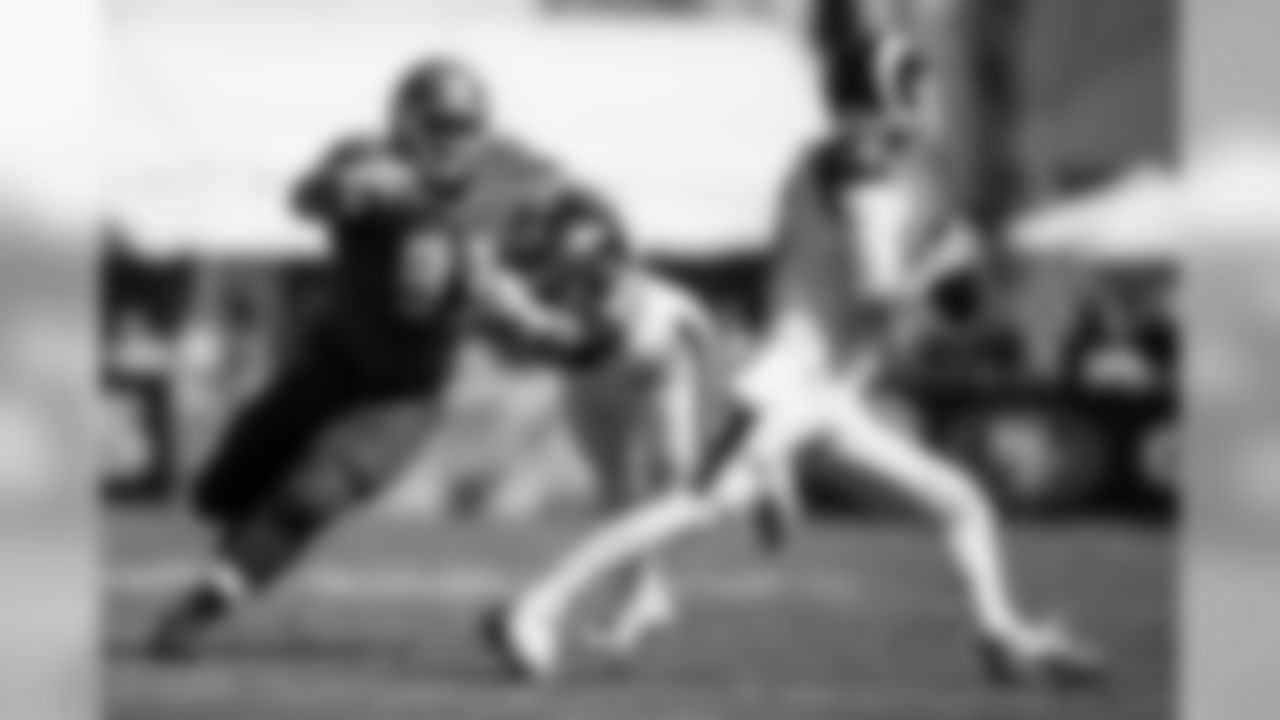
Week 11: Bucs vs. Rams, 8:15pm ET ESPN

Week 12: Bucs vs. Chiefs, 4:25pm ET CBS

Week 12: Bucs vs. Chiefs, 4:25pm ET CBS
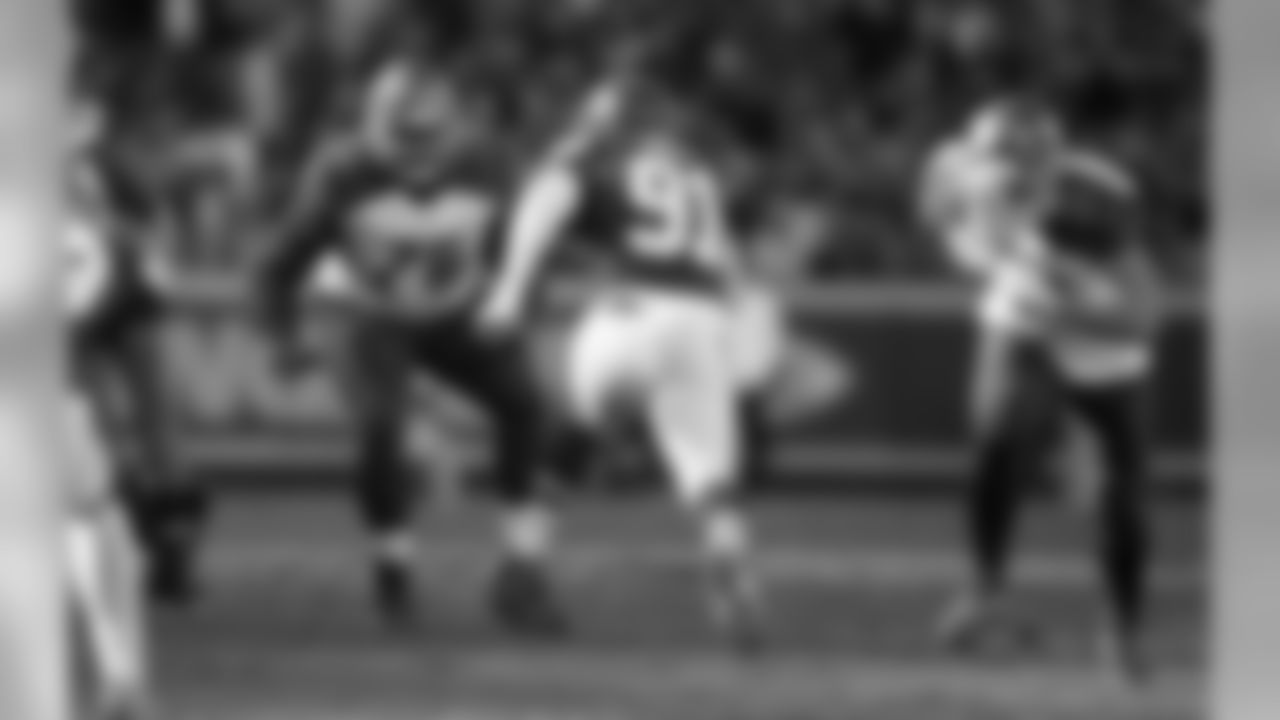
Week 12: Bucs vs. Chiefs, 4:25pm ET CBS

Week 12: Bucs vs. Chiefs, 4:25pm ET CBS
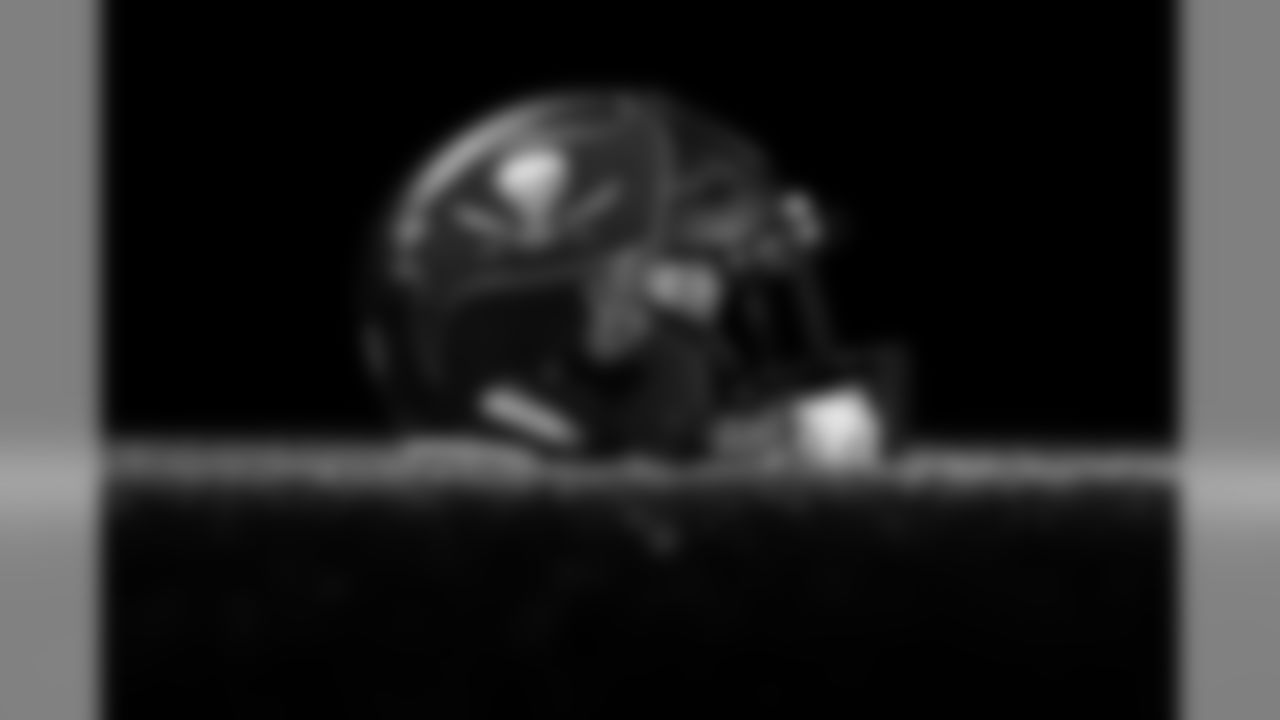
Week 13: Bye
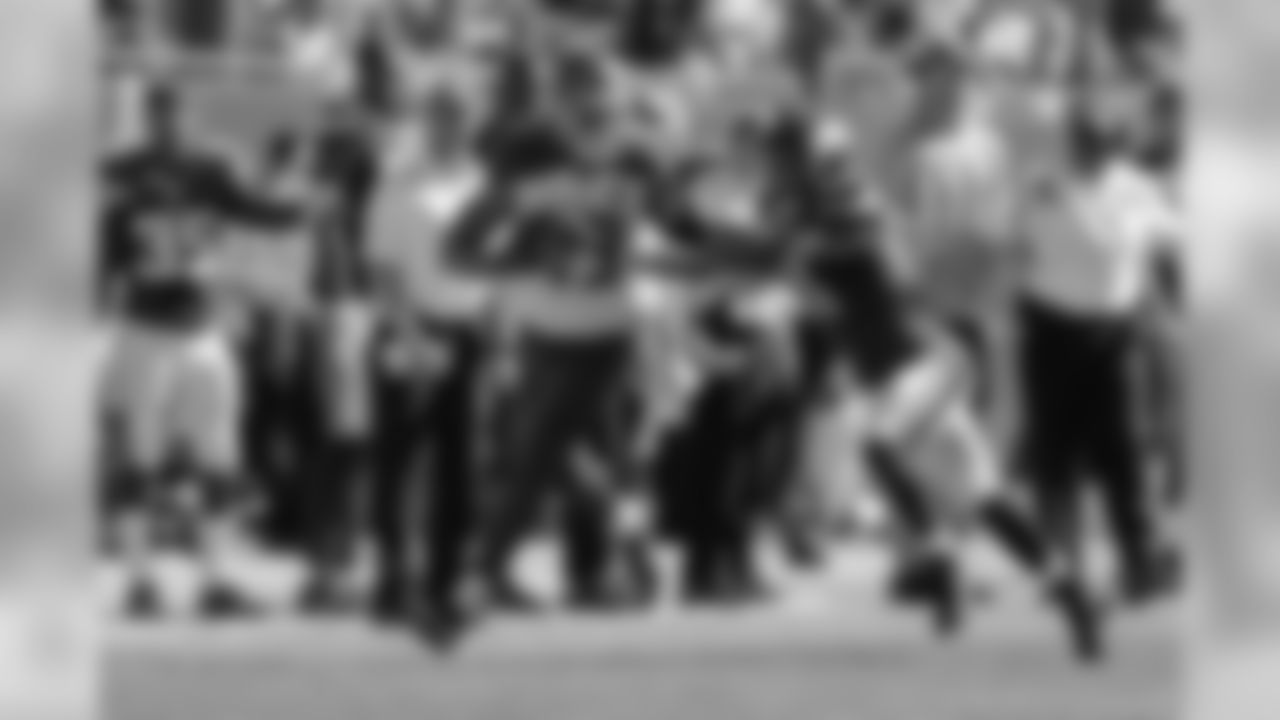
Week 14: Bucs vs. Vikings, 1pm ET FOX
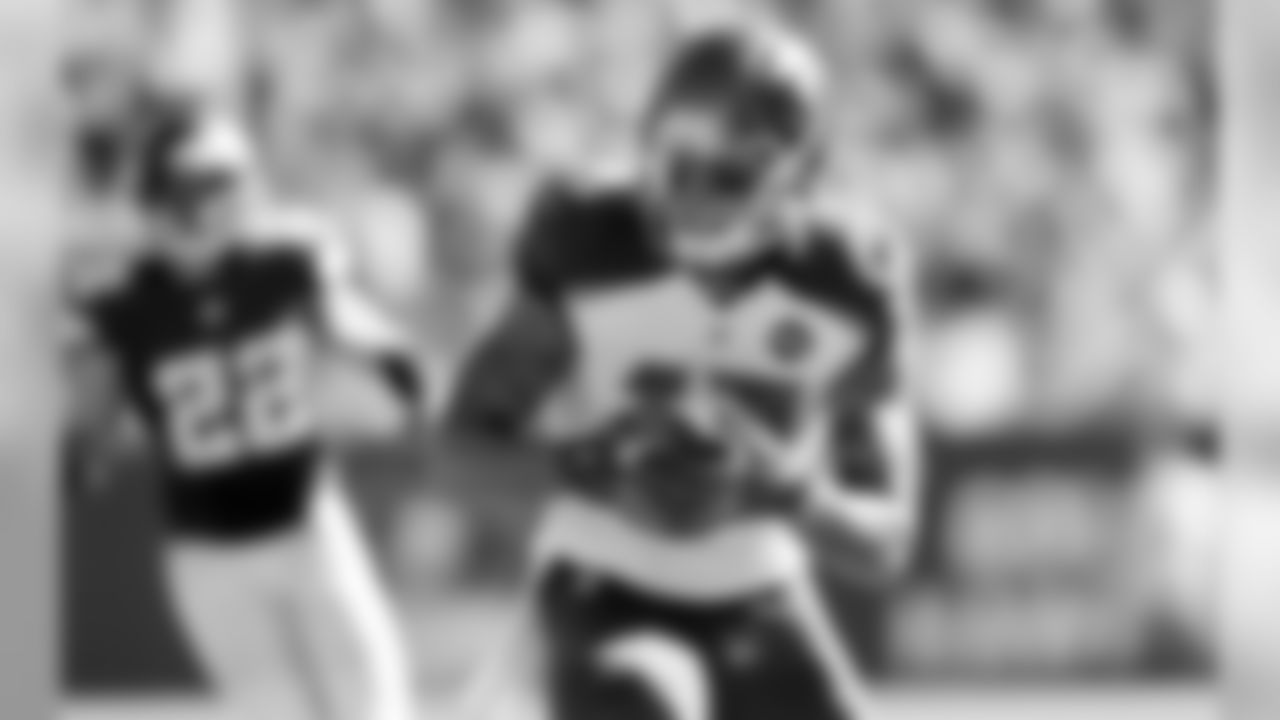
Week 14: Bucs vs. Vikings, 1pm ET FOX

Week 14: Bucs vs. Vikings, 1pm ET FOX
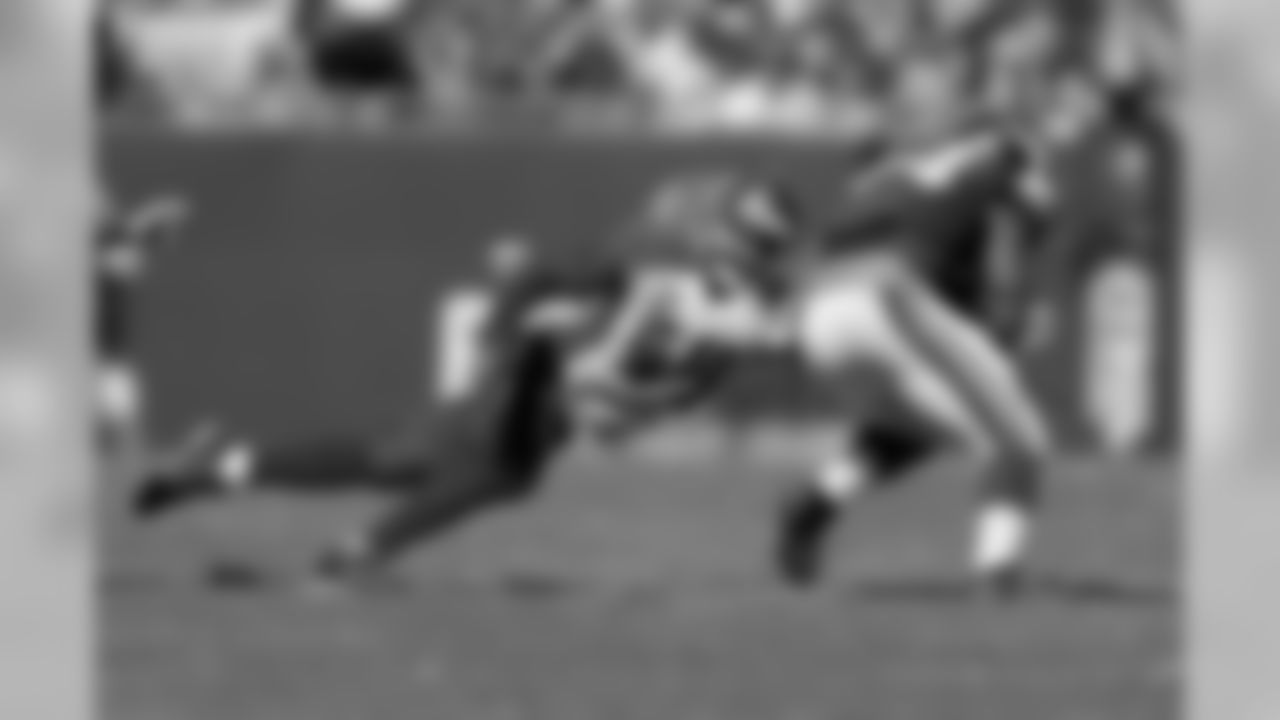
Week 14: Bucs vs. Vikings, 1pm ET FOX

Week 15: Bucs @ Falcons, 1pm ET FOX
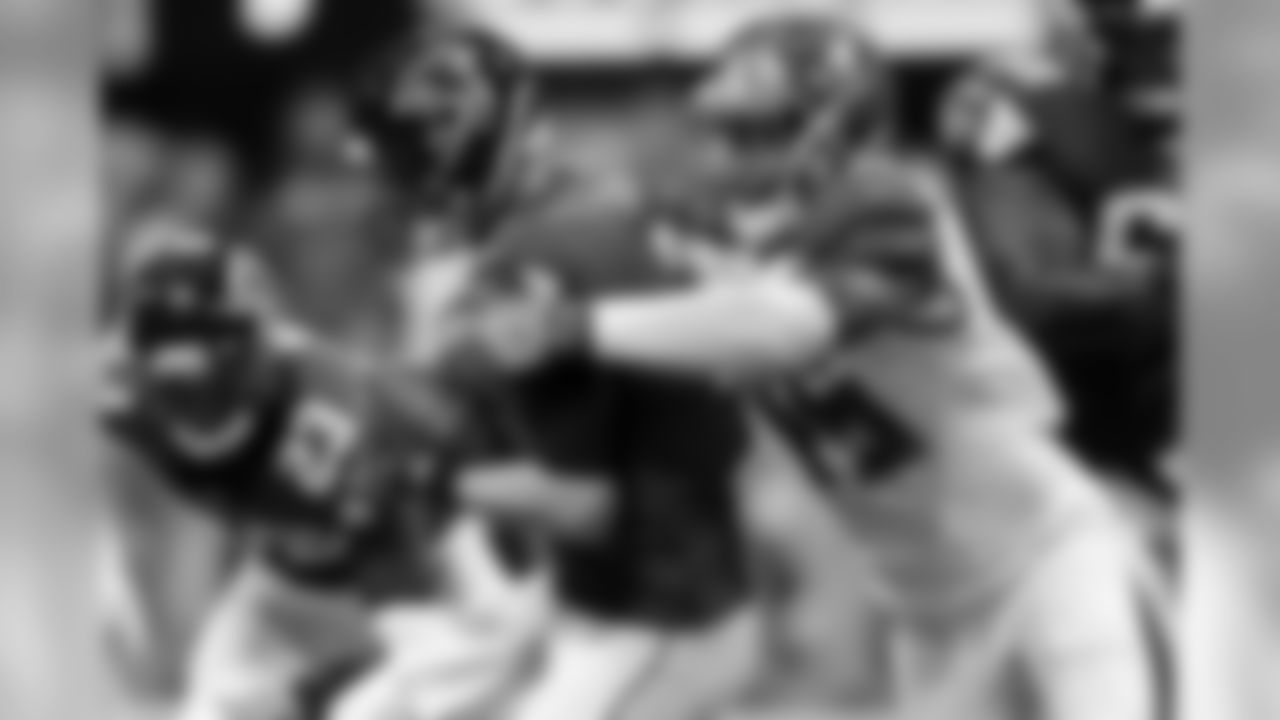
Week 15: Bucs @ Falcons, 1pm ET FOX
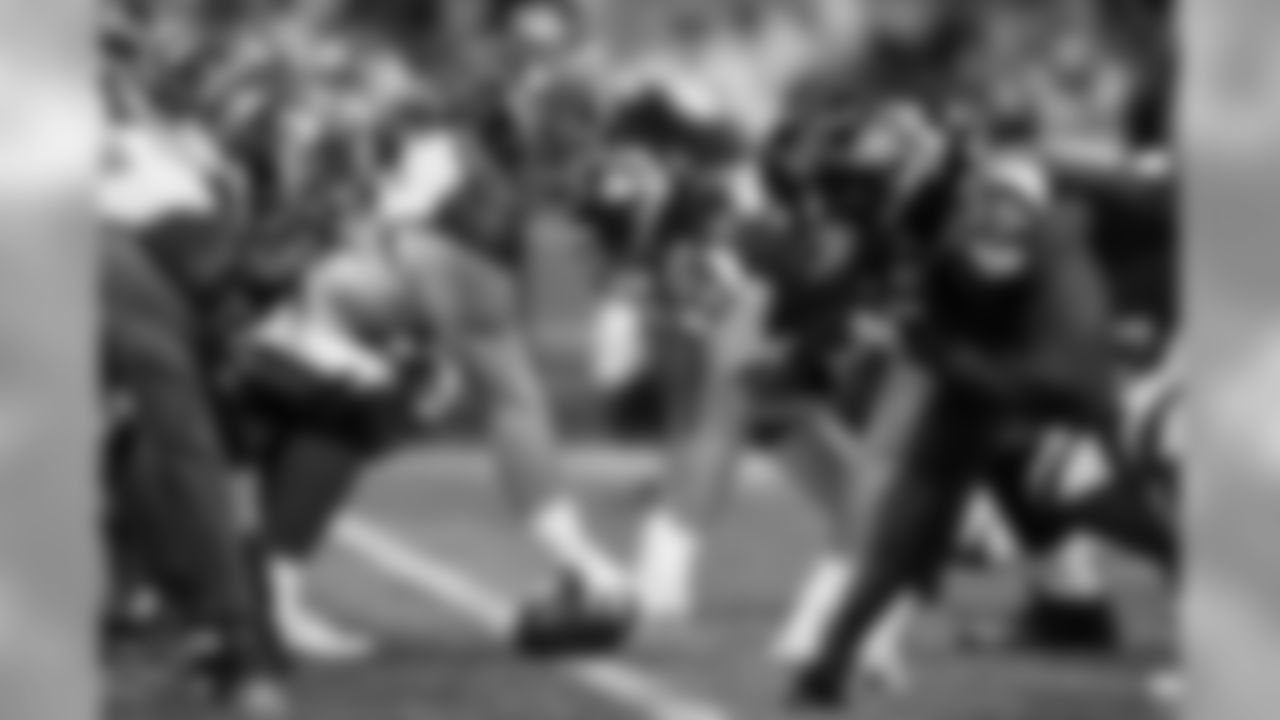
Week 15: Bucs @ Falcons, 1pm ET FOX

Week 15: Bucs @ Falcons, 1pm ET FOX
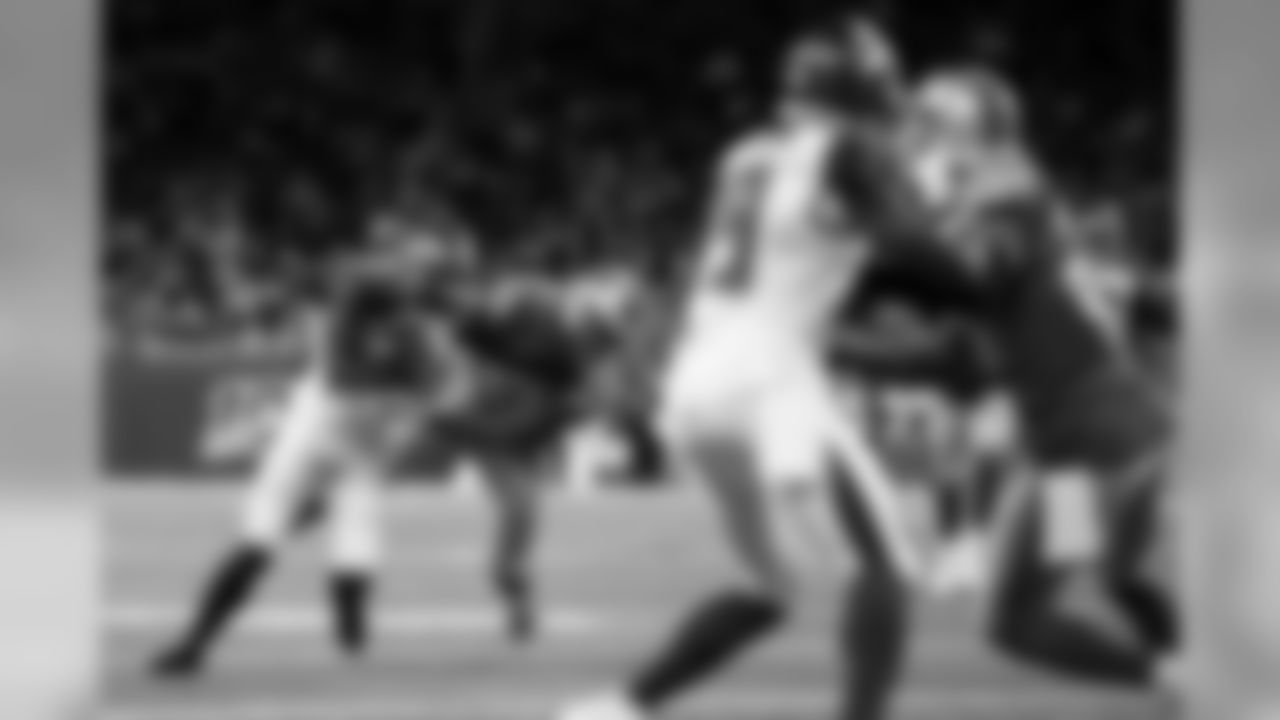
Week 16: Bucs @ Lions, TBD
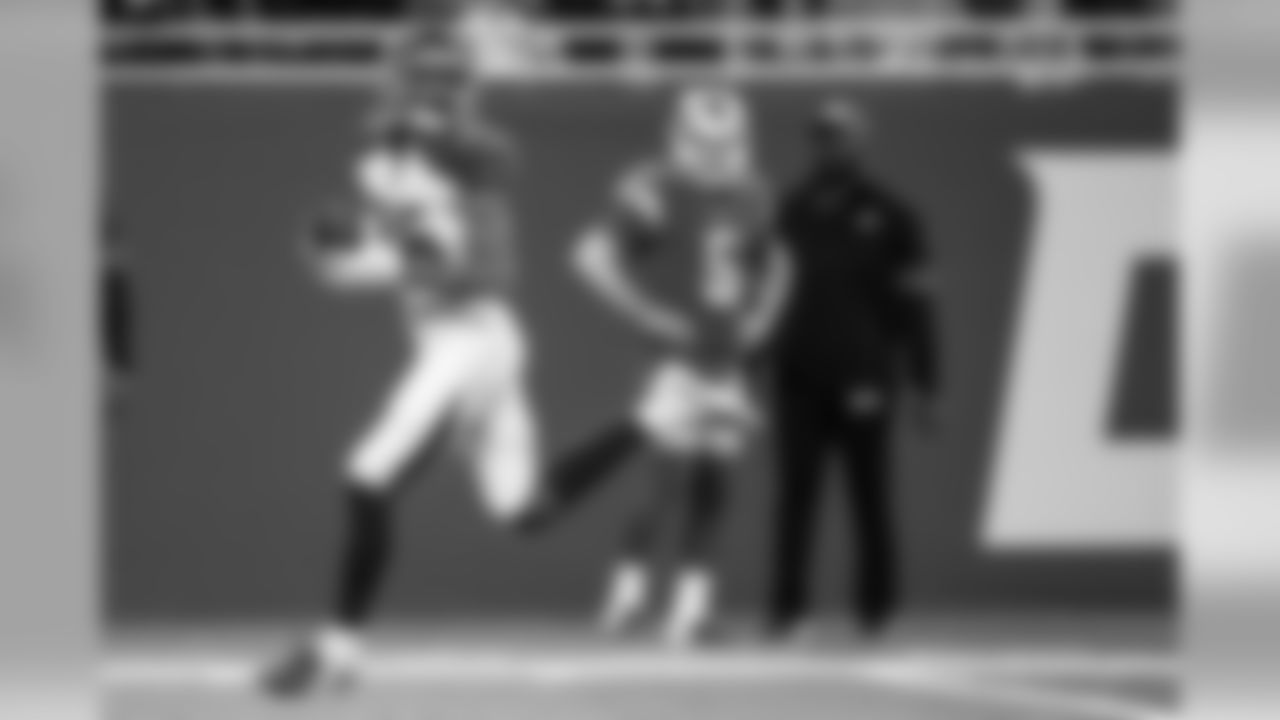
Week 16: Bucs @ Lions, TBD
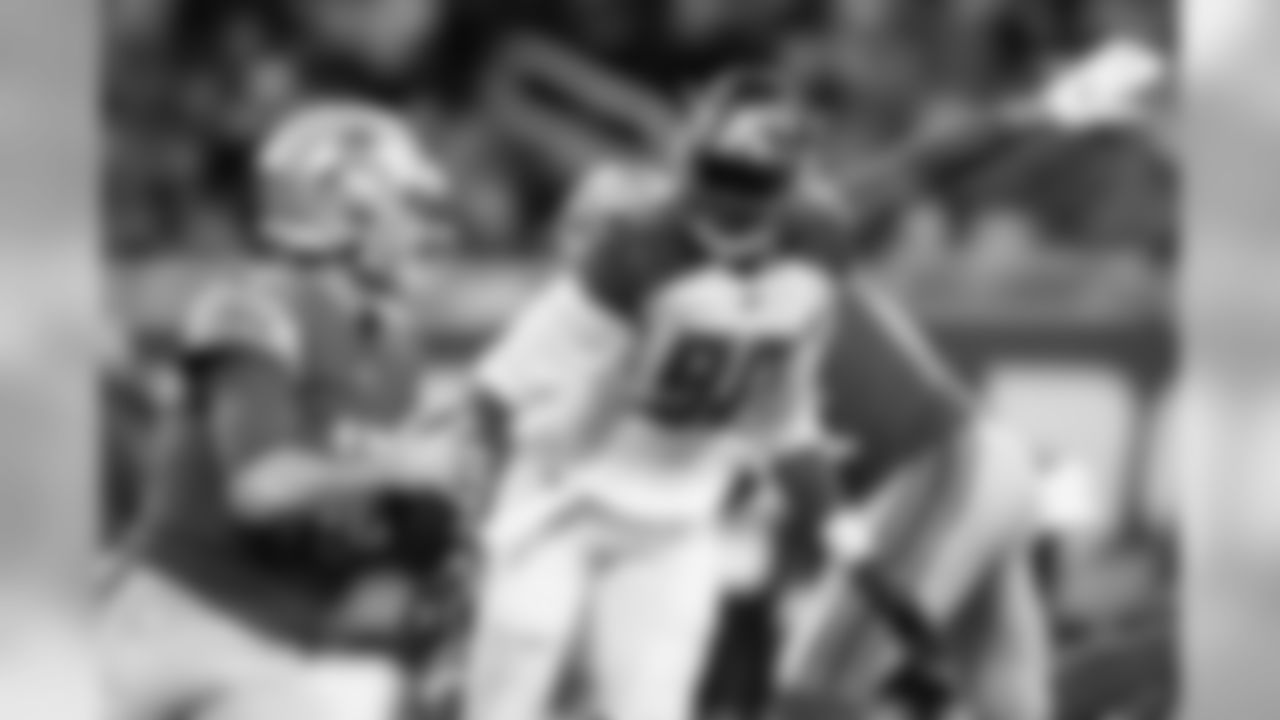
Week 16: Bucs @ Lions, TBD
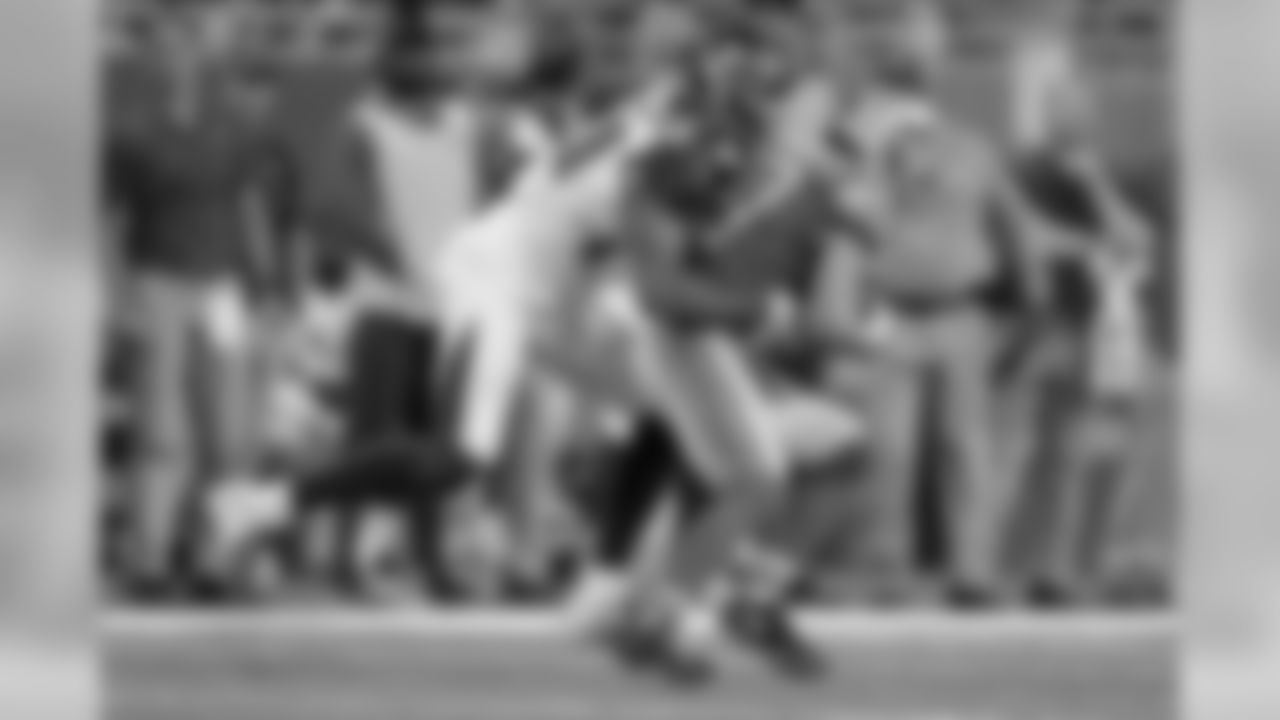
Week 16: Bucs @ Lions, TBD
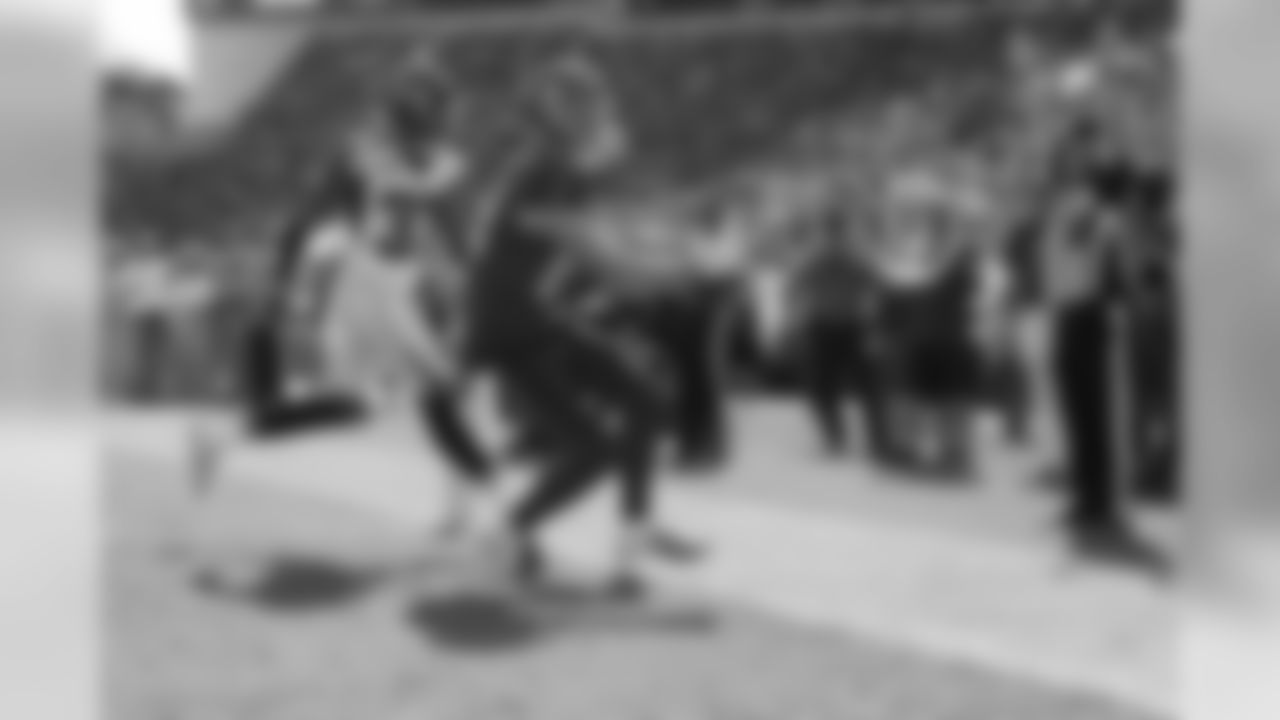
Week 17: Bucs vs. Falcons, 1pm ET FOX
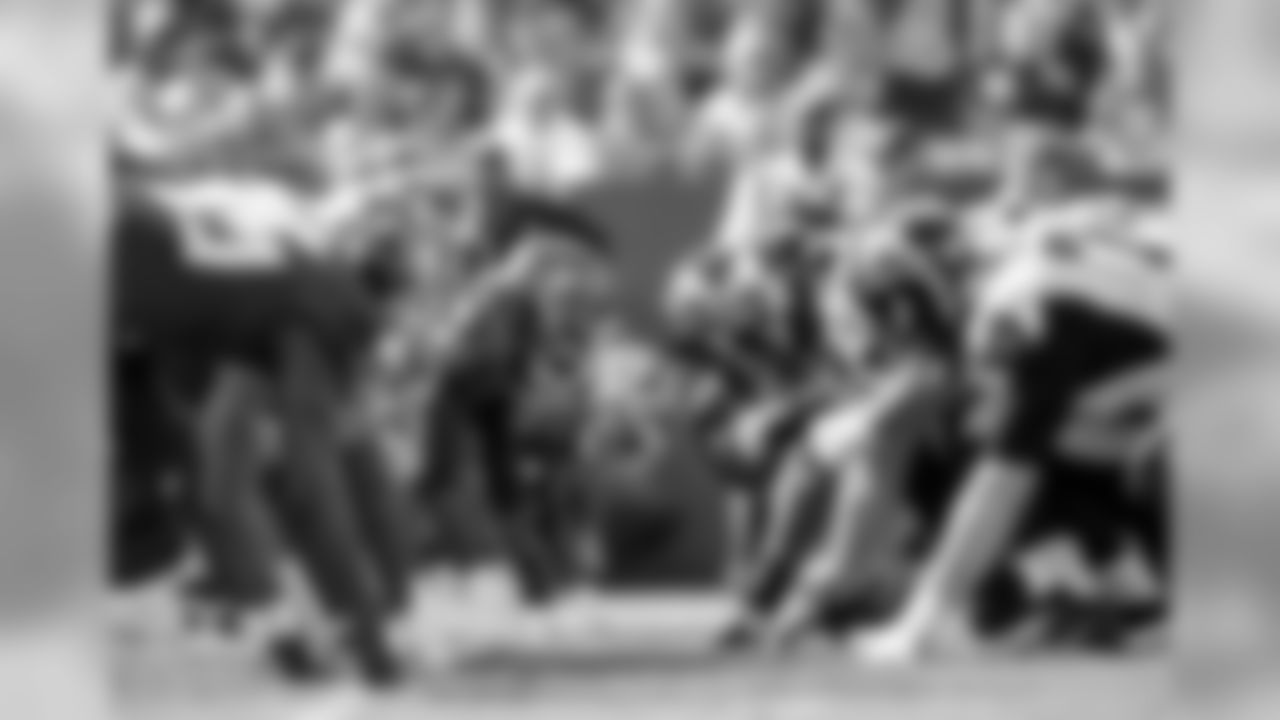
Week 17: Bucs vs. Falcons, 1pm ET FOX
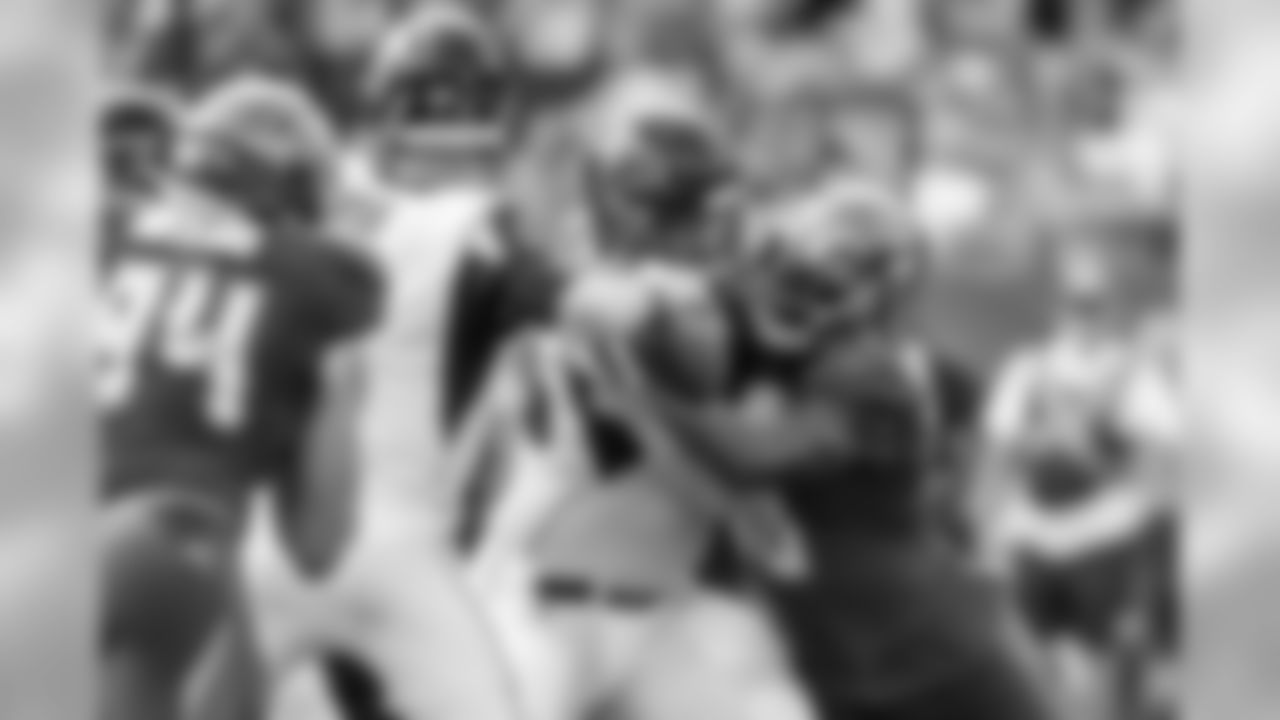
Week 17: Bucs vs. Falcons, 1pm ET FOX
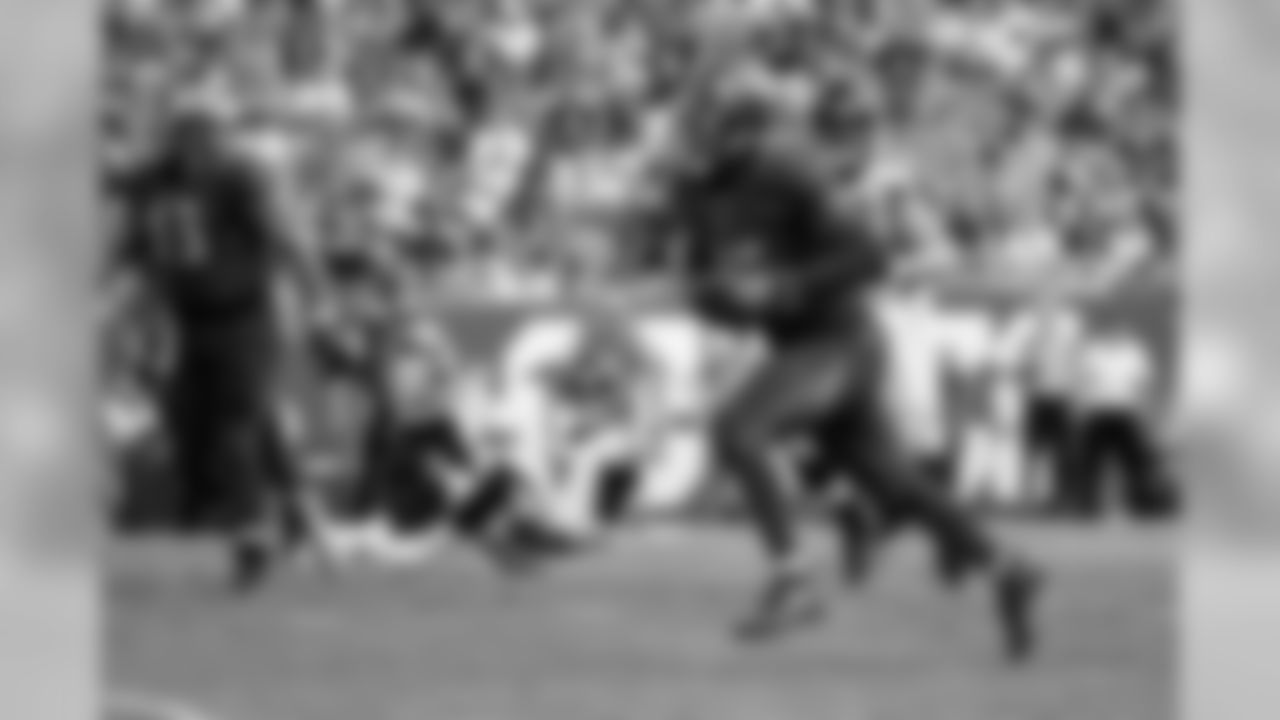
Week 17: Bucs vs. Falcons, 1pm ET FOX
Which player do you think will lead the team in touchdown receptions?
- @tjolsen13 via Instagram
Well, if I'm going to guess at everyone's receptions totals I might as well try my hand at predicting the touchdown leader, too.
Let's start with the simplest, surface-level numbers: Who led the Bucs in receiving touchdowns last year? That would be Chris Godwin, who had nine, one more than Mike Evans' eight. Breshad Perriman was third with six, and he has since departed. It's worth nothing that five of those six touchdowns came in the last four weeks, much of which Perriman spent essentially taking over for Godwin and Evans. One wonders if those two would have both hit double digits if they had stayed healthy in December. In any case, 26 of the Bucs' 33 touchdown catches were hauled in by receivers, compared to five by tight ends, one by a running back and one by a 340-pound defensive tackle (Vita Vea). The Bucs do have a new quarterback to distribute the ball this year, but the play-caller remains the same.
How about that new quarterback? In his last season with the Patriots, Tom Brady threw 25 touchdowns; 16 went to wide receivers, six to running backs, two to tight ends and, yes, one to a linebacker (Elandon Roberts). All in all, that doesn't sound too promising for the chances of Cam Brate or O.J. Howard to lead the team in touchdown catches in 2020.
But wait. The Buccaneers have also added Rob Gronkowski, who has caught 90 touchdown passes from Tom Brady, trading for the former Patriot after he chose to come out of a one-year retirement. Just three seasons ago, Gronkowski was the Patriots' touchdown leader, with eight in 2017. He's hit double digits five times, all while playing with Brady, and has gone as high as 17 in a season.
How about red zone targets, since having your number frequently called in that part of the field is the best way to spike your touchdown catch totals? Evans had 16 red zone targets in 13 games last year, the most on the team, and his ability to extend over defenders to haul in purposefully-high passes is a great skill to have in the end zone. However, Godwin had the most red zone catches, with eight on 13 targets. Godwin and Evans each had four red zone touchdowns, while all four of Brate's scores came on plays originating in that area.
Brady's most common red zone target last year was wide receiver Julian Edelman, with 20 passes thrown his way leading to 14 completions and four touchdowns. However, running back James White was right there, with 19 targets, and they were efficient, resulting in 16 catches for four touchdowns and six first downs (touchdowns count as first downs, too). Maybe that's good news for Ronald Jones or Ke'Shawn Vaughn, though I'd be shocked if either led the team in touchdown catches in 2020.
Gronkowski's tempting here but until we see just how close he is to his top, dominant form, it's a bit risky of a bet. I'm going to go the safe route and say Godwin retains his crown for one more year. Here's the thing about his nine touchdown catches last year, which were only two off the NFL lead by Kenny Golladay: It so easily could have been more.
If you have a vague memory of Godwin being tackled just before the goal line, you're not fooling yourself. Amazingly, he was stopped at the opponents' three-yard line or closer on six occasions in 2019. Six! And this was not a reflection that his tackle-breaking or run-after-the-catch skills were lacking. On the contrary, most of those were excellent catch-and-runs in which it was impressive that he even got that close to the end zone. Only one of those six plays went for less than 10 yards and three were more than 25 yards.
Godwin also led the NFL in yards gained on passes thrown to the middle third of the field, according to the NFL's NextGen statistics. I think the first red zone route that comes to mind is the end zone fade, and that's definitely something Evans is very good at. But that's actually a pretty low-percentage play. Receivers who can play out of the slot, as Godwin did on nearly half of his snaps last year and work the middle of the field with savvy and toughness are a different kind of red zone threat, and maybe a more reliable one.


































